“Ludicrous. Impractical. Terrifying. And utterly, magnificently wonderful.”
Intro – The Raging Bull Unleashed:
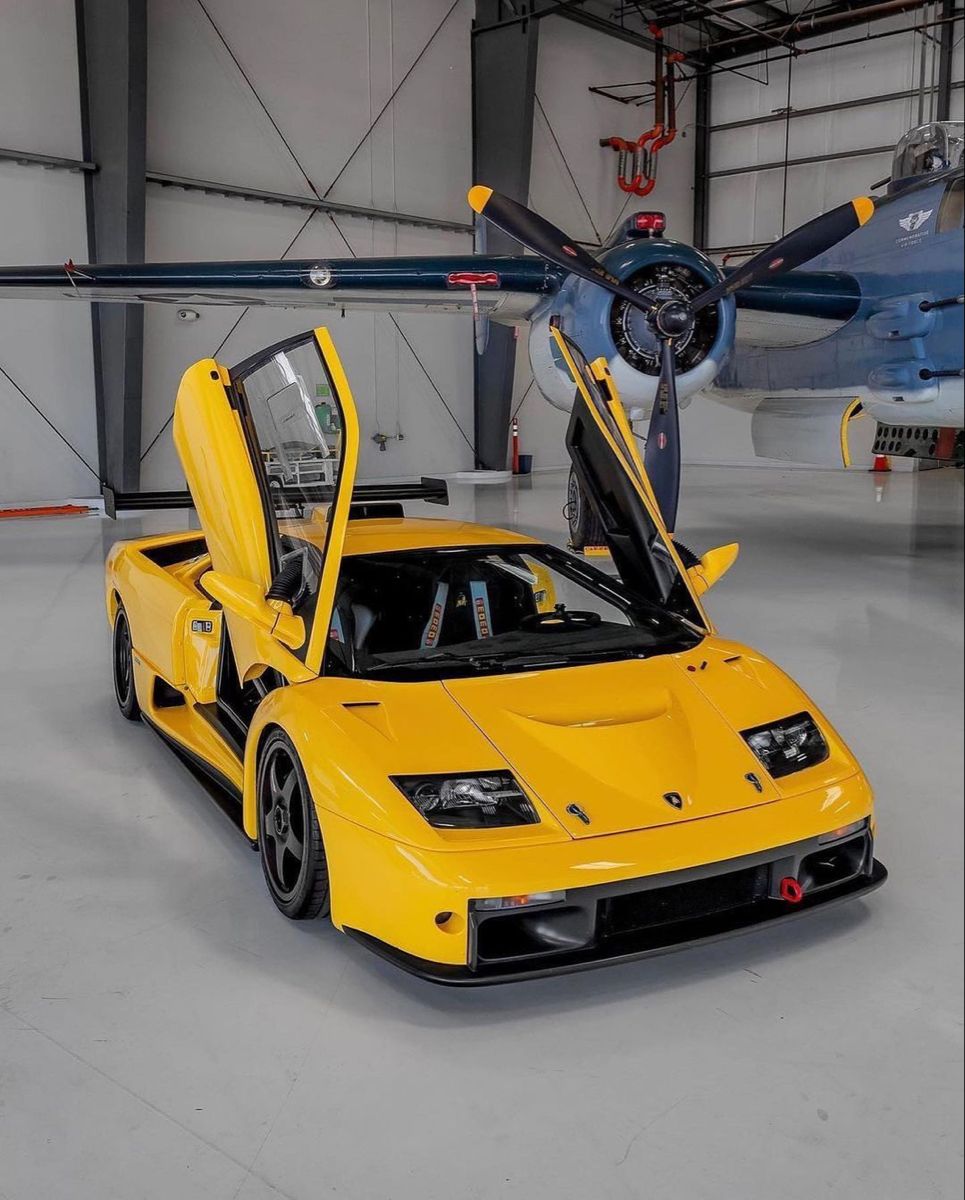
Let’s set the scene: it’s 1999, the eve of a new millennium. I’m at the Geneva Motor Show nursing an espresso, when something orange and positively unhinged growls into view. Low, wide, and wearing a wing the size of a picnic table, it’s glaring at me as if I owe it money. This is Lamborghini’s new Diablo GT, a car named after the devil and not afraid to live up to iten.wikipedia.org. In a decade that gave us boy-band music and the Y2K bug, Lamborghini decided to do something truly bonkers – take their already outrageous Diablo and make it even more extreme. The result was a racing refugee for the road, a 6-liter V12, rear-wheel-drive howitzer with number plates. It was the mad uncle at the family reunion of supercars, scaring both children and rival Ferraris alike. And as Jeremy Clarkson might say, “there are cheaper used cars, but none scarier”topgear.comtopgear.com. Buckle up, because we’re about to dive into the history and hysteria of the 1999 Lamborghini Diablo GT – a car that made even other Lamborghinis look tame.
To understand the GT, you first need to know the Diablo’s origins – a story as dramatic and convoluted as an Italian opera. The Diablo had the unenviable task of replacing the legendary Countach in 1990, and it did so in true Lamborghini style: late, loud, and with a point to prove. Development started in the 1980s under Marcello Gandini, the famed designer behind the Countach’s origami angles. Gandini sketched a wild, wedgy supercar worthy of bedroom wall posters, but partway through development Lamborghini was bought by Chrysler (yes, the minivan company). The Americans, with their penchant for actually selling cars to humans, refined Gandini’s design – “smoothed the wedge,” so to speakautoevolution.com. The Diablo that finally launched in 1990 was still a head-turner – capable of over 200 mph and christened “Diablo” after a ferocious 19th-century fighting bull (and because “devil” suited it perfectly)en.wikipedia.orgbullbar.biz. It was also the first production Lamborghini to break the 200 mph barrier, making it the fastest car in the world at its debut, just as Lamborghini intendedotsandco.com.
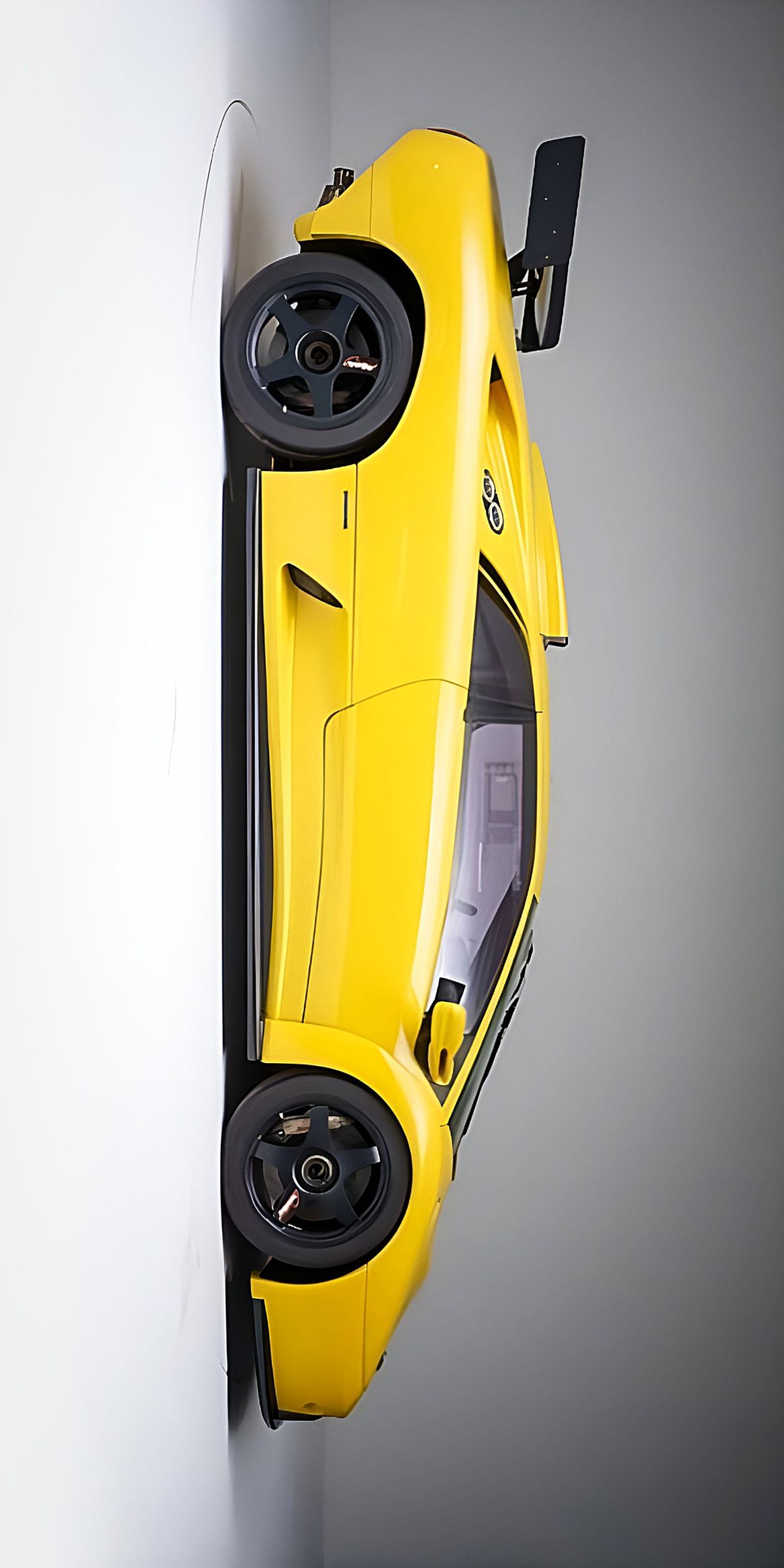
However, life at Lamborghini is rarely a smooth Italian espresso. After Chrysler’s stint, the company ping-ponged through owners like a hot potato – Indonesian and Malaysian investors in the mid-90s, followed by the all-powerful Volkswagen Group (Audi) in 1998autoevolution.comautoevolution.com. Through all this, the Diablo kept evolving in true soap-opera fashion. They added all-wheel-drive on the VT models, power steering, ABS brakes, a roadster version, an SE30 anniversary special, and the lighter SV (Sport Veloce) model for the wild at heartotsandco.com. By the late ‘90s the Diablo had more variants than an Italian gelato shop has flavors. Each iteration got a bit faster, a bit crazier – variable valve timing bumped power to 523 hp by 1998, brakes grew, and pop-up headlights were ditched for fixed lamps borrowed (hilariously) from a Nissan 300ZX, of all thingsautoevolution.com. Yes, if you peer into a late Diablo’s eyes, you’re basically looking at a Japanese sports car’s peepers – a fact that never fails to tickle me.
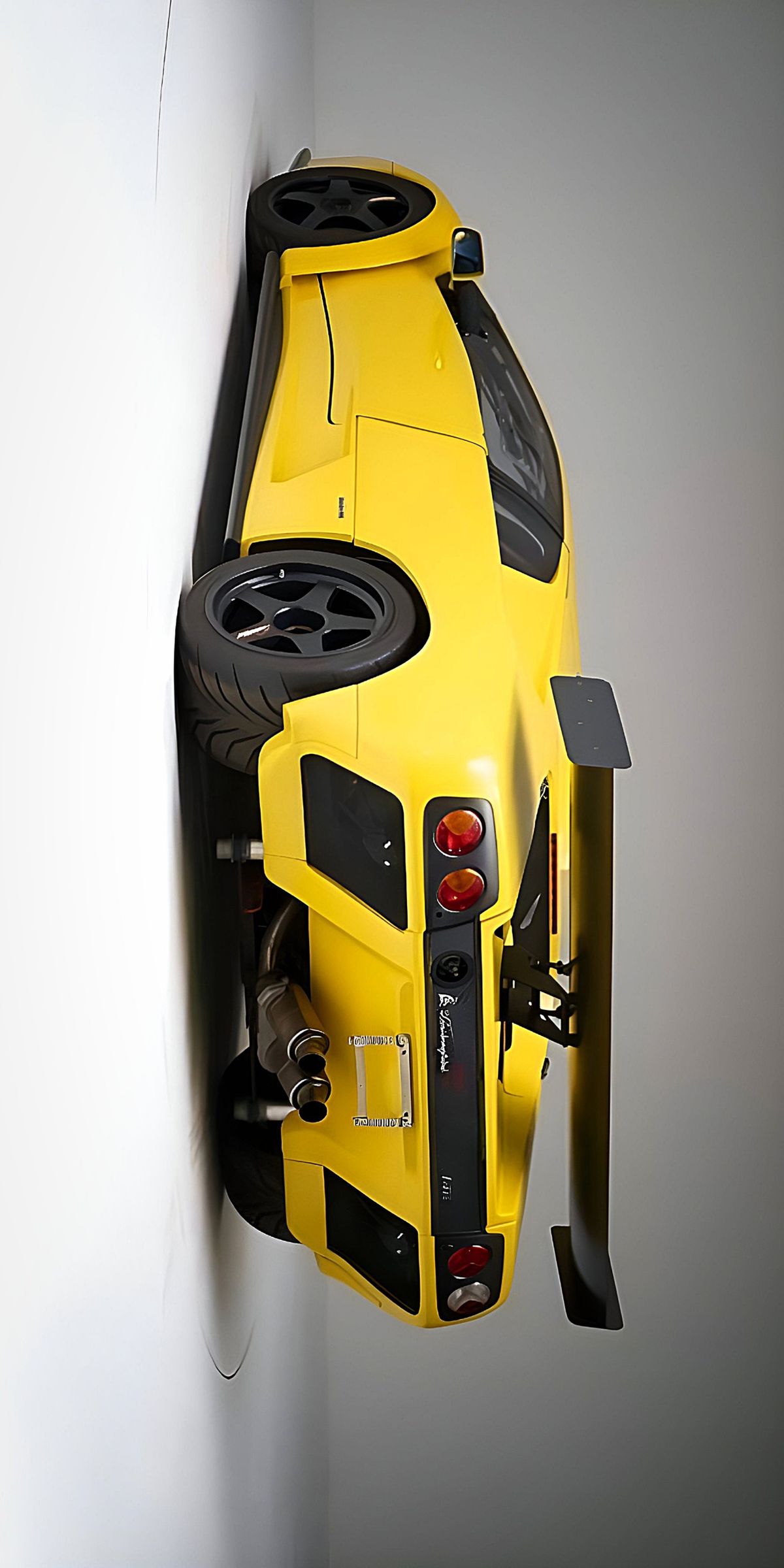
By 1998, Audi’s Ferdinand Piëch – a man who collected car brands like stamps – had Lamborghini in his grasp and was plotting the Diablo’s successor (the Murciélago)autoevolution.comautoevolution.com. But the old Italian bull wasn’t done yet. The engineers at Sant’Agata (likely over many late-night espressos and heated “discussions” in dialect) had been tinkering with a racing program for the Diablo. Lamborghini had built wild track-only prototypes like the Diablo GT2 and campaigned a one-make Diablo Supertrophy racing series, gaining experience in turning the Diablo into a true circuit monsterlambocars.comen.wikipedia.org. They figured: why not channel all that into a final, road-going swan song for the Diablo? Thus was born the Diablo GT, unveiled in March 1999 at Geneva as the ultimate iteration of the breedlambocars.com. With Audi’s checkbook open and corporate overlords to impress, Lamborghini essentially said “arrivederci caution” and built a Diablo for lunatics – or as the press kindly put it, “the most exciting variant of all”otsandco.com. Only 80 units were slated for production (all for Europe), making it rarer than a polite Italian traffic warden, and a numbered series at that (in the end 83 were built total, including prototypes)otsandco.com. This was the last hoorah of an independent Lamborghini, the final rear-wheel-drive Lambo for over a decadef30.bimmerpost.com – and it was appropriately unhinged.
Every outrageous car has people who made it happen – often equally outrageous characters. The Diablo GT’s creation was a team effort spanning multiple eras of Lamborghini. There was Marcello Gandini, the design maestro who gave the Diablo its dramatic DNA in the first place, only to see some of his wildest touches toned down by Chrysler’s design head Tom Gale in the late 80swearecurated.com. (Word has it Gandini wasn’t thrilled by the softening – he later took his original plans and helped create the Cizeta V16, basically Diablo as imagined by Salvador Dali, but that’s another story.) Nonetheless, Gandini’s influence remained – the low snout, the scissor doors, the cab-forward wedge profile – all classic Lamborghini cues. By the time of the GT in ’99, another designer had entered the fray: Luc Donckerwolke, a young gun Audi assigned to modernize the Diablo for its final yearsen.wikipedia.org. Donckerwolke would soon pen the Murciélago, but first he cut his teeth refining the Diablo VT 6.0 (the more civilized brother of the GT)en.wikipedia.org. One imagines Donckerwolke walking into the Lamborghini design studio in 1998, seeing the half-finished GT with its crazy scoops and wings, and simply grinning ear to ear – “Jawohl, let’s do it!”
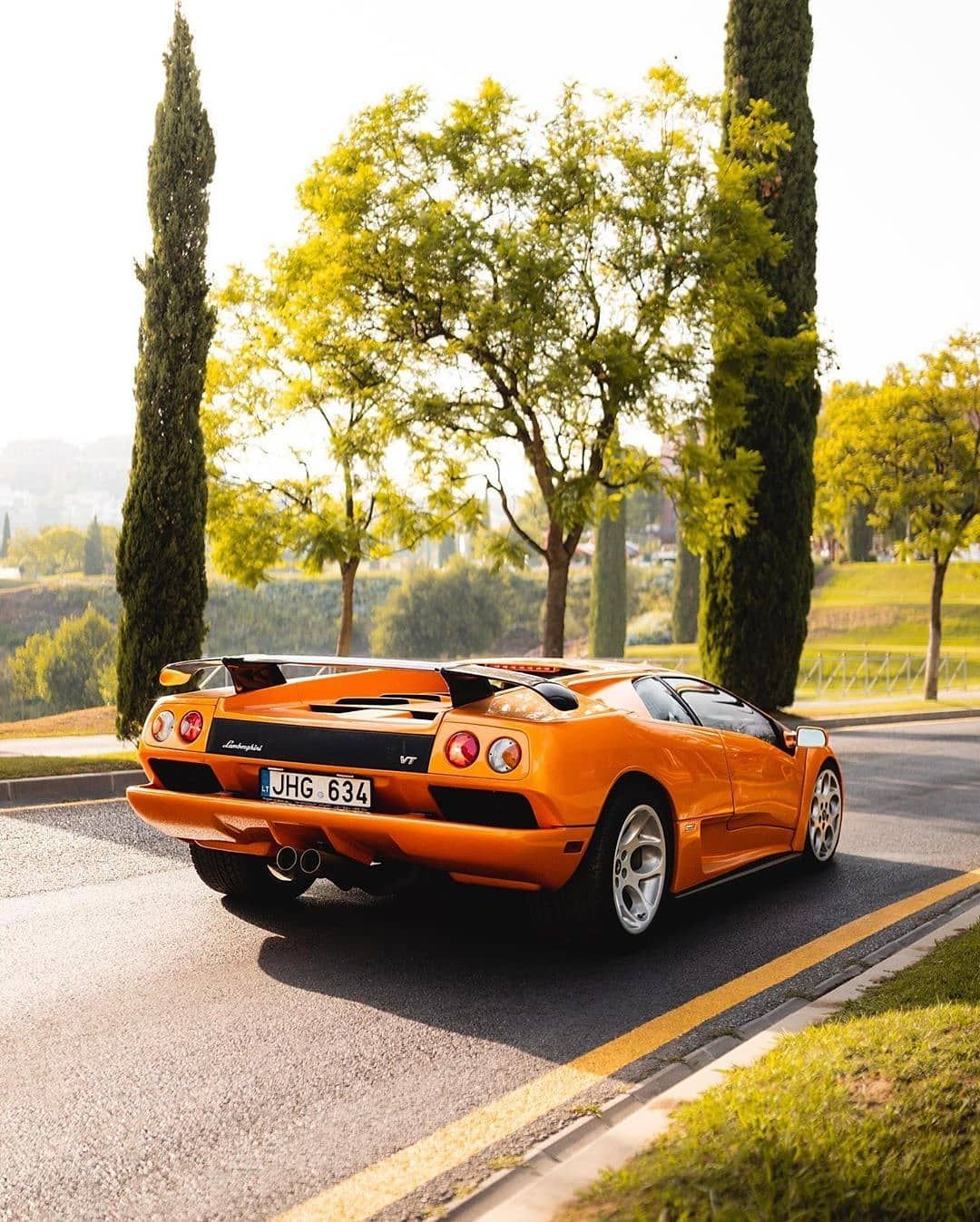
On the engineering side, legends like Luigi Marmiroli had laid the groundwork back in the ’80s, engineering the Diablo’s chassis and V12 upgrades through its many versions. By the GT’s time, much of the development team were essentially hot-rodding their own car. They stroked the classic Lamborghini V12 from 5.7 to 6.0 liters, threw in a lighter crankshaft, titanium con-rods and racing-grade engine bitsotsandco.com. And then there was Valentino Balboni, Lamborghini’s veteran test driver – the man whose job description was basically “drive it like you stole it, and tell us if it scares you.” Balboni had tuned the feel of every Lamborghini since the Miura. One can only imagine his face after testing the Diablo GT. (Legend has it he needed a doppio espresso and a lie-down after the first high-speed run.) When asked about the last rear-drive Lambo he helped sign off, Balboni diplomatically called it “special” – which in Lamborghini-speak is a euphemism for “utterly insane, be careful”.
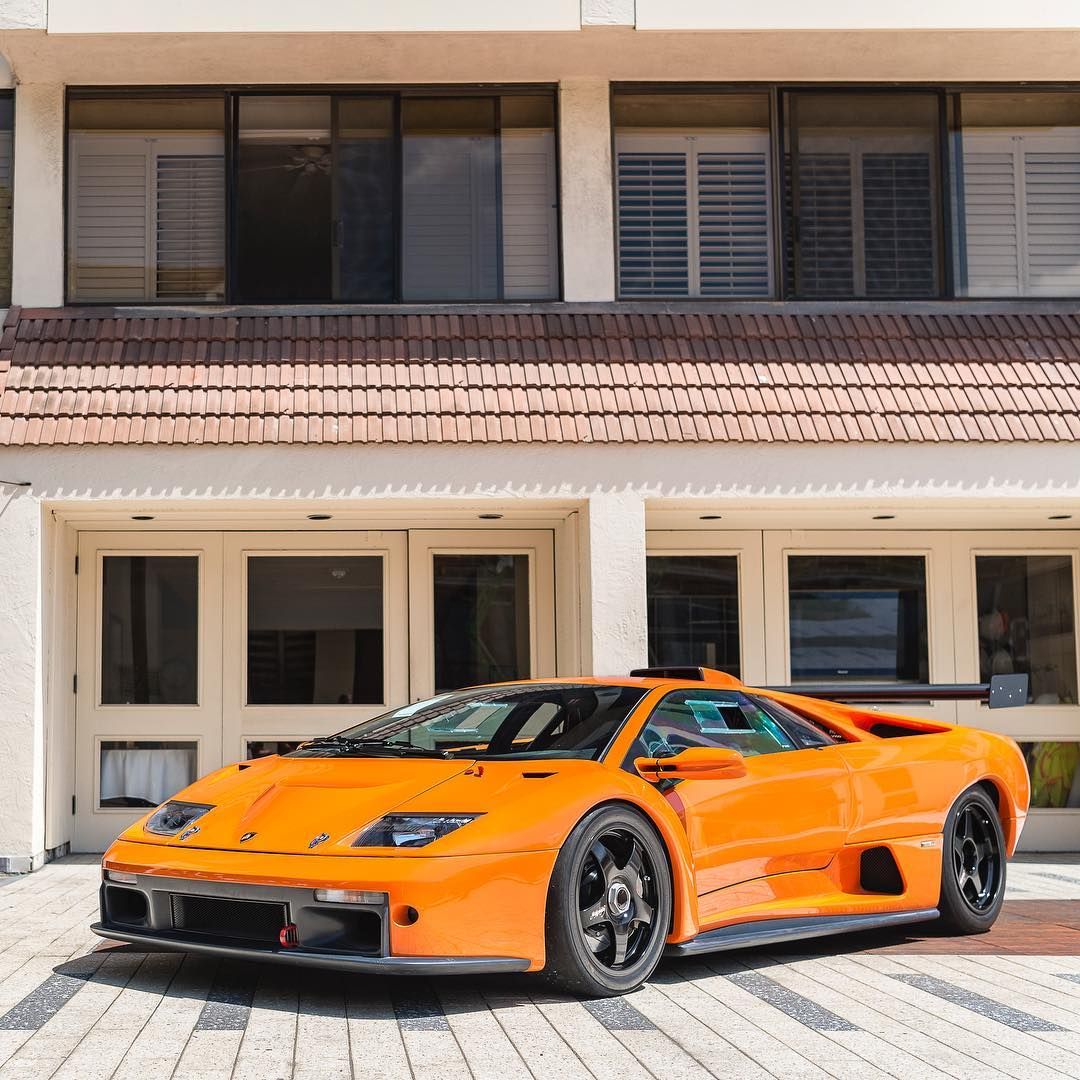
Even the corporate suits had a role in this madness. Ferdinand Piëch at VW was happy to have a show-stopper to announce Audi’s new stewardship – and nothing says “We own Lamborghini” better than funding a special that outshines Ferrari’s best. In fact, rumor has it the Diablo GT was a bait for potential buyers before the Audi takeover – proof that Lamborghini could still build something truly spectacular to sweeten the dealautoevolution.com. And once Audi was on board, they green-lit the project as a final hurrah for the Diablo while the new Murciélago was cooking in the ovenautoevolution.com. The result was a car that both Horacio Pagani (Lambo’s former composites specialist turned supercar maker) and Gandini could be proud ofautoevolution.com. Pagani, incidentally, had left Lamborghini years prior because they wouldn’t invest in an autoclave for carbon fiber – so he built the Zonda. Oh, the irony: the Diablo GT ended up using more carbon fiber than any Lamborghini before, as if making up for lost timeotsandco.com. Somewhere, Mr. Pagani must have cracked a satisfied smile at that.
Caption: The Diablo GT was a Diablo on steroids – wider, angrier, and festooned with carbon-fiber aero bits. Note the giant rear wing and the roof-mounted air intake snorkel poking above the roofline. Every vent, scoop and spoiler was functional – or at least looked wild enough to be! *Visually, the Diablo GT was to the standard Diablo what a flamethrower is to a candle. It took the already dramatic shape and turned every dial up to eleven. At the front, the nose was completely reshaped into a menacing carbon-fiber snouten.wikipedia.org. Gone was any semblance of a bumper – instead you got a black carbon front air dam with gaping intakes that could swallow stray cats whole, plus a central vent to cool the oil radiatoren.wikipedia.org. The hood (sorry, front deck lid, since the engine’s in the back) sprouted a large vented bulge – an air extractor to relieve high-speed pressure and keep the front plantedwearecurated.com. Even the tiny pop-up headlights of yore were replaced by fixed units under clear covers (with a wink to that Nissan parts-bin secret). The front fenders grew NACA-style air ducts on top, channeling air to the brakes and looking like gills on a sharkwearecurated.com. And the whole front track was widened by 110 mm, necessitating those swollen, almost cartoonishly wide wheel arches that make the car look glued to the groundwhichcar.com.au. In person, the GT sits low and wide like it’s doing push-ups on the tarmac – a proper predator’s stancelambocars.com.
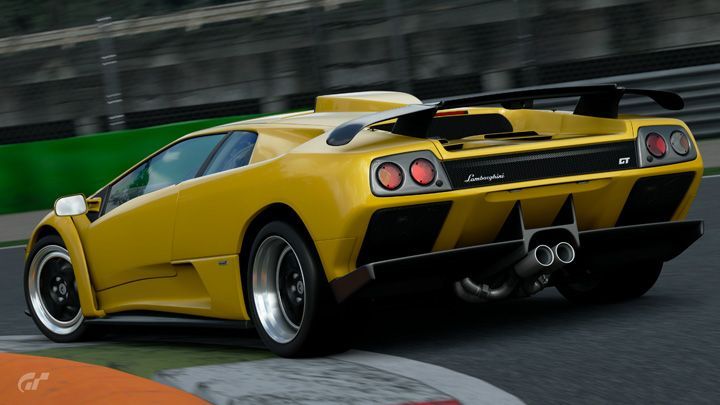
Move to the side and you notice extra vents in the sills and broader side skirts. Those skirts weren’t just for show – they were extended to increase the flat floor area for downforce like a race car diffuser, sucking the car to the pavement at speedotsandco.com. The side air intakes that feed the engine and rear brakes remained gigantic – on the GT they’re practically jutting out to scoop up small children if you’re not careful. The wheels were special too: OZ Racing 3-piece alloys, with a deep dish that makes the car look even wider. Interestingly, Lamborghini used some optical trickery here – the rims have almost the same visible lip front and rear, masking how much wider the rear track actually isautoevolution.com. It’s as if the GT is hiding its true width until you try to squeeze it down a narrow road (at which point you discover it’s about as slim as a sumo wrestler in shoulder pads).
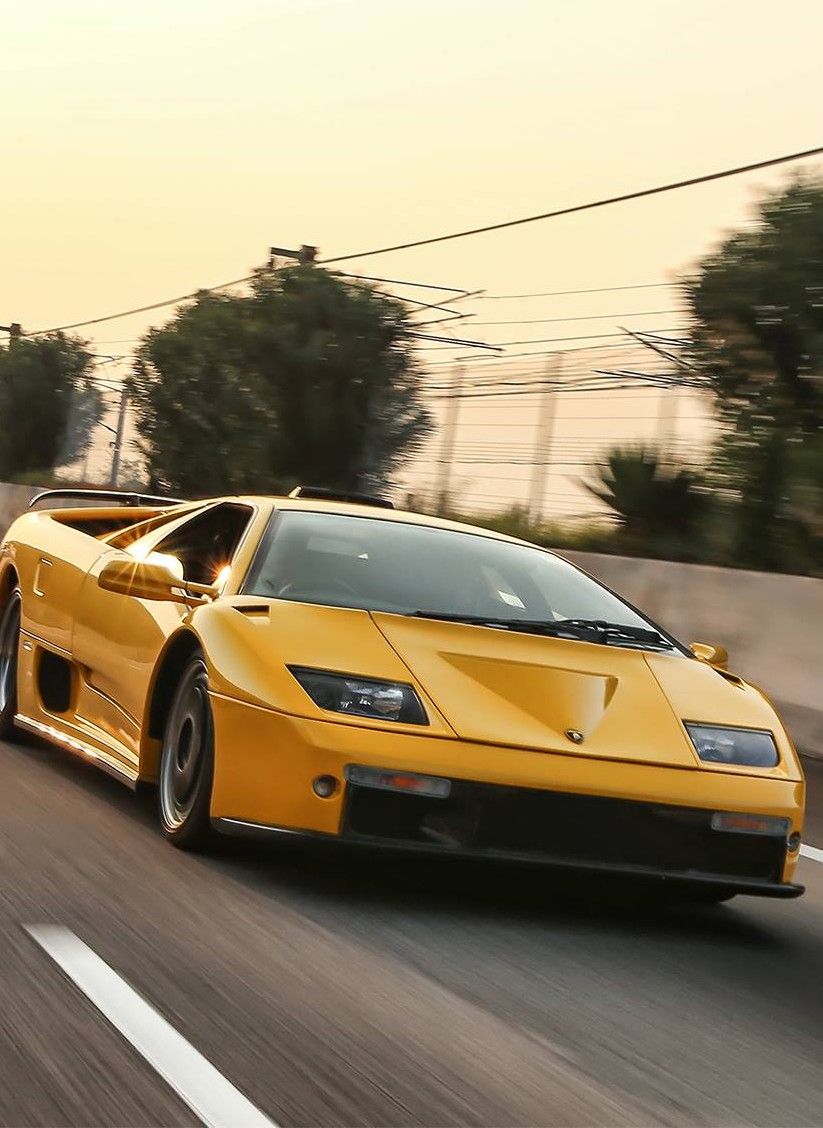
And then there’s the rear, which is where the GT truly departs from the regular Diablo. Lamborghini completely deleted the rear bumper – who needs such trivialities as bumpers when you have a race-car diffuser, right?en.wikipedia.orgen.wikipedia.org In its place is a large carbon-fiber diffuser framing twin central exhaust pipes that look like cannon barrelsen.wikipedia.org. The GT’s backside is basically an aggressive grin of mesh, vents, and carbon, with the tail lamps floating above. In fact, since the bumper (and its built-in reverse lights) were gone, the outer tail lights were repurposed to house the fog and reverse lamps – a nifty bit of parts jugglingen.wikipedia.orgen.wikipedia.org. Hanging above all this is the “terrifying fixed rear wing” as one writer aptly called ittopgear.com. This wing isn’t a subtle lip spoiler; it’s a giant plank of high-gloss carbon that screams “downforce or bust!”lambocars.com. It came standard on the GT (because of course it did) and is adjustable if you fancied tuning your aero balance for track days. It’s also probably large enough to serve tea on, if one were so inclined. Clarkson’s law: everything is better with an air scoop and a wing – and the GT has both in spadestopgear.com.
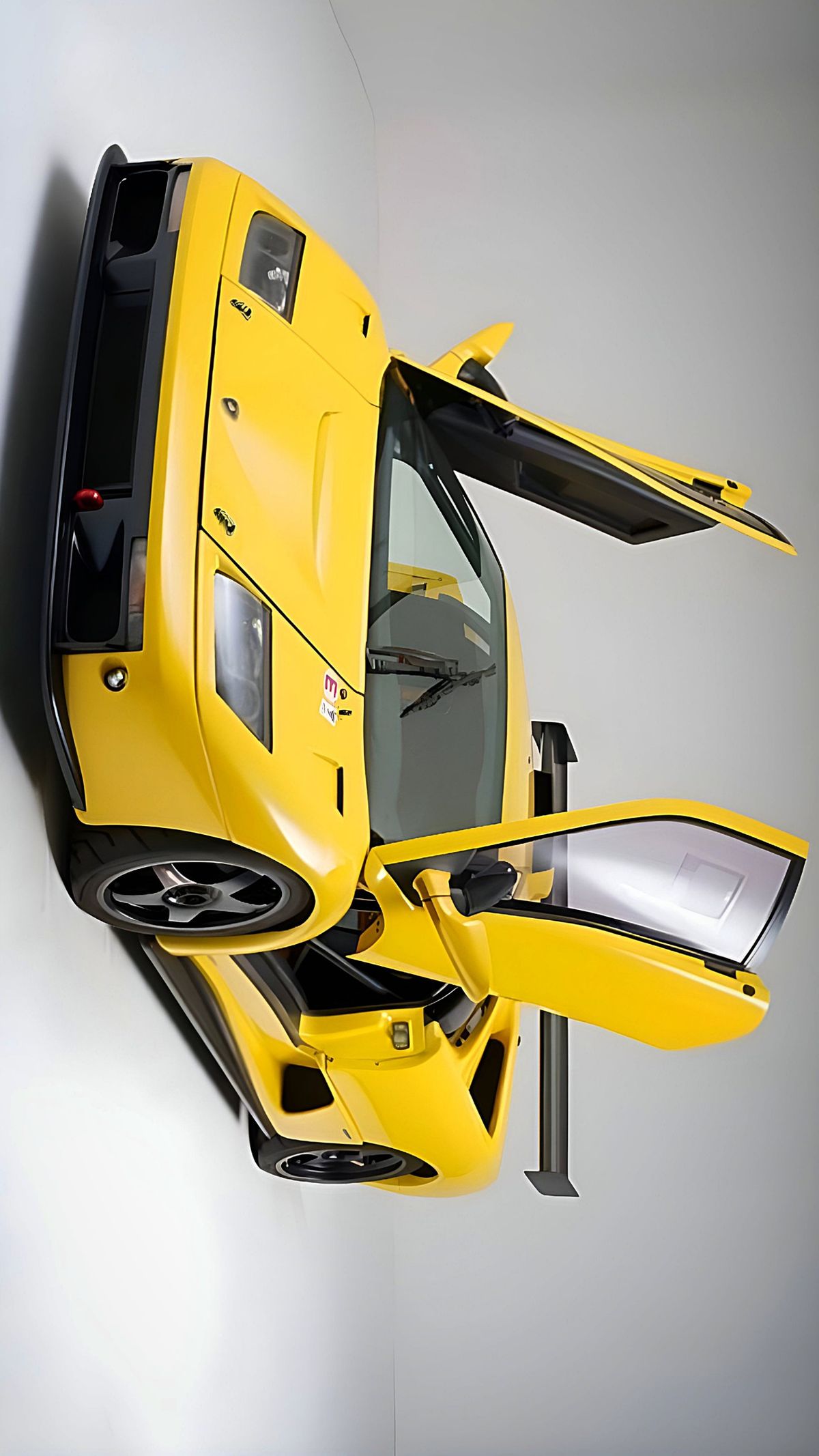
Ah yes, the air scoop. Possibly the GT’s most iconic visual flourish is that roof-mounted intake snorkel that protrudes above the roofline like a shark’s fin, gulping in air for the engine. If the standard Diablo looked like a charging bull, the GT’s roof scoop makes it look like a bull with a mohawk. Functionally, this central ram-air intake forces cool air into the hungry V12, improving breathing and adding a few extra decibels to the intake roar. It’s a direct trickle-down from the Diablo SE30 Jota and the GT2 race prototypes, and it’s arguably the car’s defining silhouette feature – you spot that scoop and you know you’re looking at something special (or something that wants to eat you, or both). The only downside? The scoop completely blocks rear visibility, turning the rear-view mirror into a decorative piece. Lamborghini’s solution: fit a rear-facing camera in the wing and pipe it to a little Alpine LCD screen inside. In 1999, a reversing camera in a supercar was sci-fi stuff – Lamborghini did it out of necessity (to avoid owners reversing $300,000 of raging bull into a lamppost). Clarkson would note, “Good thing too, because parallel parking a Diablo GT using the mirrors alone is like trying to thread a needle blindfolded.”
Perhaps most impressive, nearly the entire body of the GT is crafted from carbon fiber. Lamborghini had dabbled in carbon bits before, but the GT went full send: fenders, hood, engine lid, diffuser, skirts – all carbon. Only the roof remained steel (for structural integrity) and the doors stayed aluminum (perhaps so you can dent something if you swing them up into a low garage ceiling). This obsessive dieting shaved about 154 pounds off the chassis compared to the already lightened Diablo SV, and about 400 lb off versus the AWD VT model. That’s like tossing a whole motorcycle out of the car. The result is a fighting weight of around 1,460 kg (3,219 lb) – featherweight for a big V12 GT of the era. All that carbon also meant you could get wild exposed carbon fiber weave on the wing or splitter, giving the GT a high-tech flair. In typical Lamborghini fashion, you could order loud colors (many GTs came in screaming orange, bright yellow, or menacing black), but no matter the paint, parts of this car proudly wear their carbon like a badge of honor. In sum, the Diablo GT looks every inch the racing monster it was meant to be. Park it next to a standard Diablo, and the regular car suddenly seems almost sedate. The GT has nostrils flaring, haunches bulging, and a “come at me” stance – like it’s about to launch itself at the nearest race track or unsuspecting corner. Subtle? Not a chance. Spectacular? Absolutely.
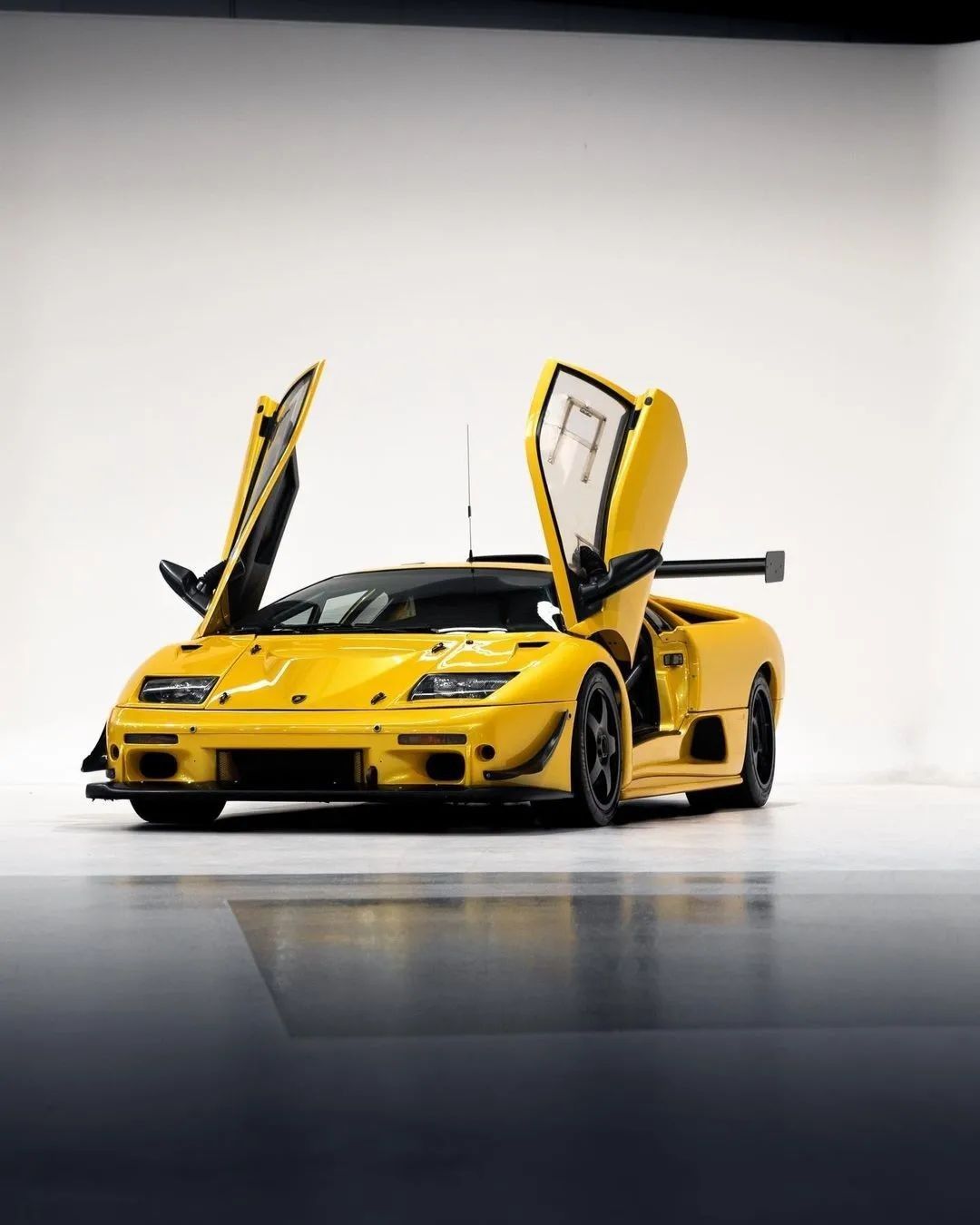
What sits behind the driver in the Diablo GT is nothing less than an engineering epic poem – a 12-cylinder symphony of power and fury. Lamborghini’s V12 is the stuff of legend, tracing its lineage back to the 1960s Miura, but by the late 90s it had evolved into a fire-breathing, modernized unit. For the GT, the engineers essentially gave it the “big bore kit” of their dreams. The standard Diablo 5.7-liter V12 was stroked from an 80 mm to 84 mm piston throw, bumping displacement to 5992 cc (6.0 liters)en.wikipedia.org. In plain English: they made it bigger and badder. With revised internals (that new billet crankshaft and lightweight rods we mentionedotsandco.com), higher compression, and upgraded engine management, the GT’s engine gained not just size but serious punch. Output jumped to 575 PS (567 horsepower) at 7300 rpm, with 630 Nm (465 lb·ft) of torque peaking around 5500 rpmen.wikipedia.org. That’s a solid 30+ horsepower gain over the contemporary Diablo SV, and nearly 80 hp more than the original Diablo from 1990. In 1999, these figures were astronomical. Even today, 567 horses is nothing to sniff at – back then it put the Diablo GT right at the top tier of supercar power, eclipsing the Ferrari F50 (520 hp) and just shy of the McLaren F1 (627 hp). In fact, Lamborghini cheekily detuned the GT from the even wilder 600hp race trim, probably for the best. As one insider quipped, “We could have given it 600 hp, but we figured 575 was enough to scare the pants off our customers.” They were right.
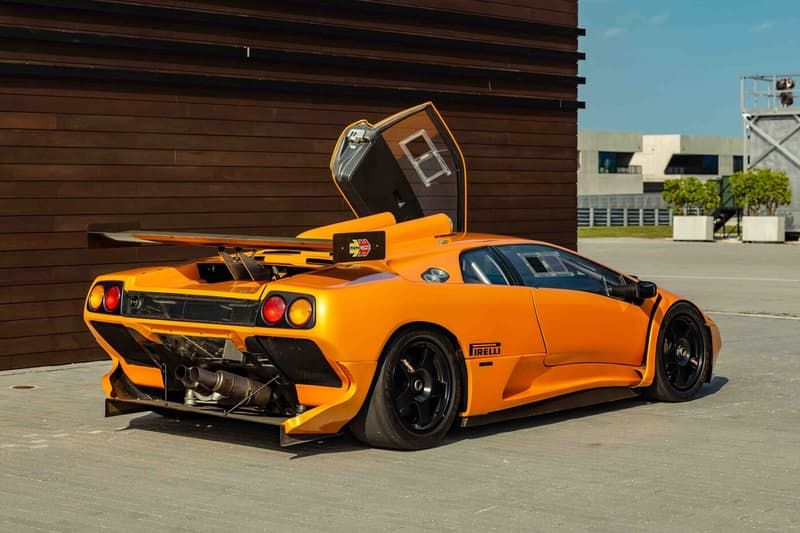
The GT’s V12 wasn’t just about brute force; it had some high-tech (for the era) tricks. It featured an Individual Intake System – 12 separate throttle bodies, one per cylinderlambocars.com. If a regular car has one mouth to feed the engine, the GT had a dozen ravenous mouths, each gulping air and fuel with ferocity. This not only improved throttle response to hair-trigger levels, but also made the engine bay look like a piece of metallic art – a row of polished trumpets leading into that massive carbon-fiber airbox on topotsandco.com. The exhaust system was unique too, employing something Lamborghini called Exhaust Noise Control System (ENCS)lambocars.com. Now, what exactly “noise control” means in a Diablo is up for debate – rest assured, the GT did not come with a mute button. In essence, it might have had bypass valves or silencers that could mellow the roar at low speeds…only to open up and let the full banshee wail loose at high revs. And oh, what a wail it is. The Diablo GT’s sound is often described as “biblically loud,” a feral shriek layered over a basso profundo V12 rumble. One journalist said the GT “roars to life” like some prehistoric beastfacebook.com. It’s the kind of sound that sets off car alarms two blocks away and causes bystanders to erupt in spontaneous applause (or dive for cover). Jeremy Clarkson once likened a Lamborghini V12’s song to a Brahms symphony played with the amps turned to max – and in the GT, the volume knob was broken off at max.
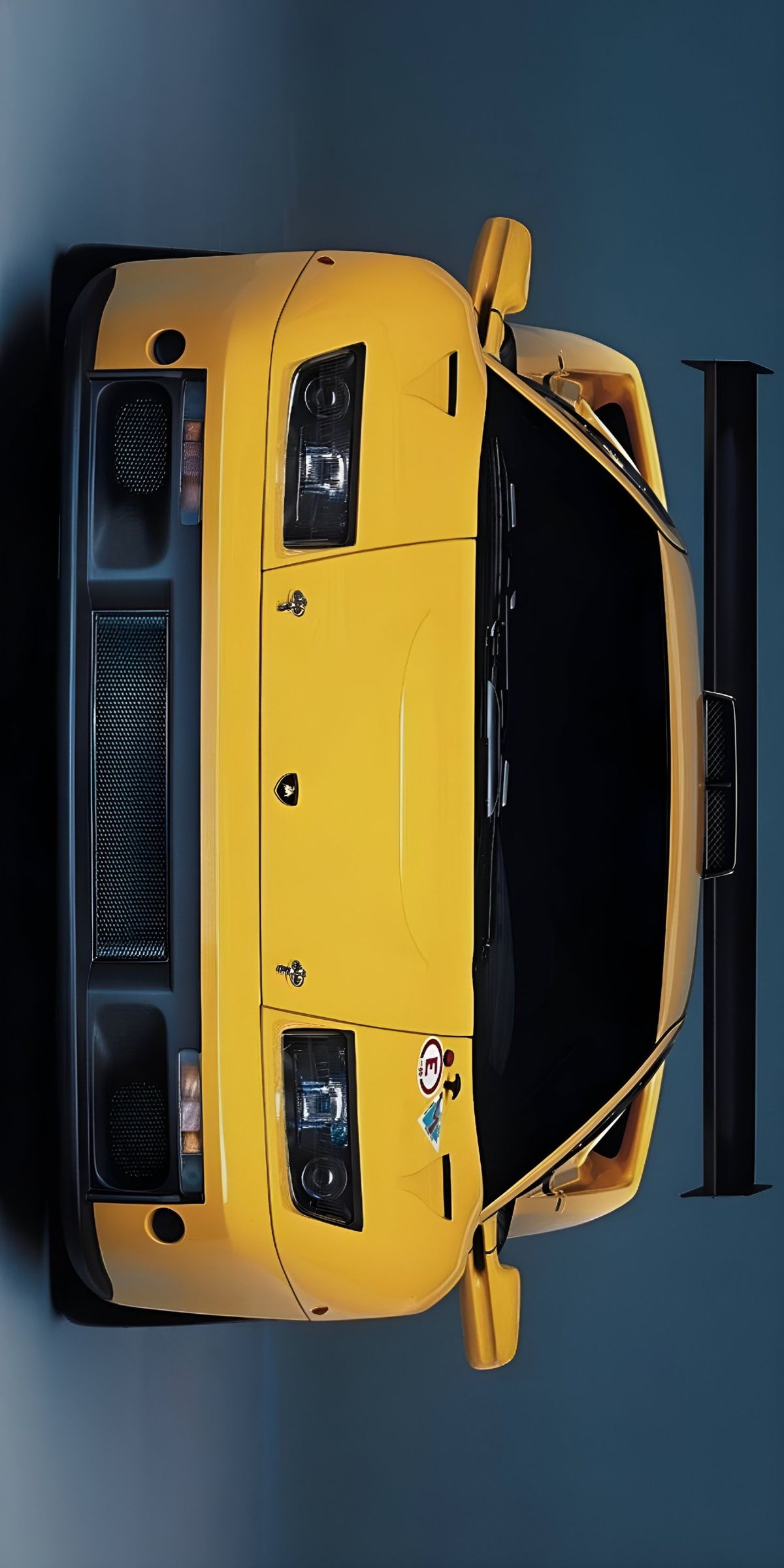
All this mechanical lunacy translates to seriously absurd performance. The official figures: 0–60 mph in around 4.4 seconds, 0–100 mph in under 9 seconds, and a top speed in excess of 210 mphtopgear.comwearecurated.com. For context, in the late 90s only a handful of cars – the McLaren F1, Jaguar XJ220, Ferrari F50 – were in that 210+ club. Lamborghini claimed 340 km/h (211 mph) and some sources even whispered 215 mph on a good daylambocars.comsupercars.net. Now, whether any owner was brave enough to actually see 340 km/h without the aid of a very long runway and a life insurance policy is another matter. This car was geared for velocity: it had taller ratios to hit that top speed, unless a buyer opted for shorter custom gears to trade some v-max for even crazier accelerationen.wikipedia.org. Either way, the Diablo GT was one of the fastest road cars on Earth when new – a fact not lost on the company or the lucky lunatics who bought one.
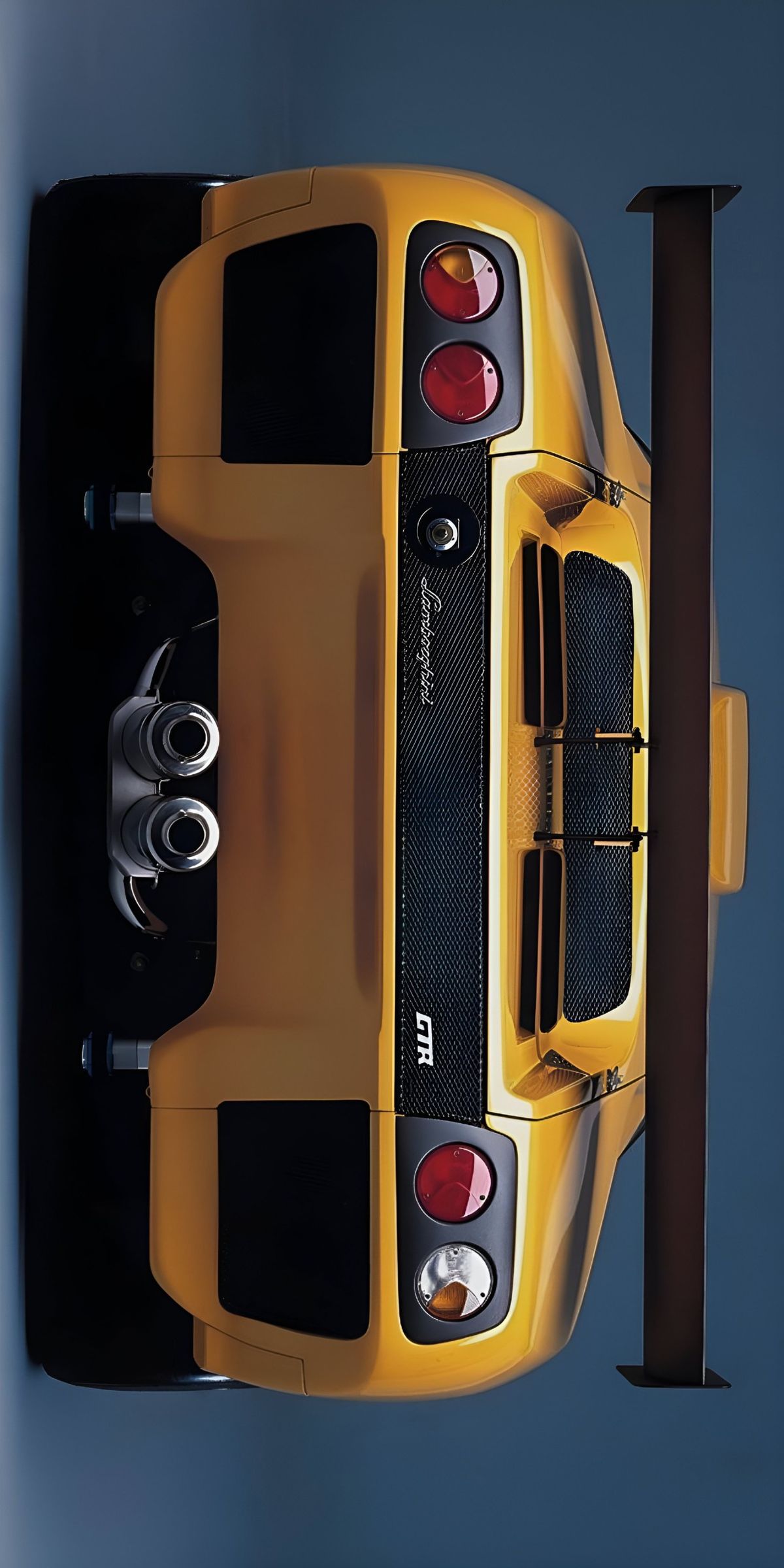
But raw numbers only tell part of the story. It’s the feeling that counts. And the Diablo GT delivers the kind of acceleration that can rearrange your internal organs. With rear-wheel-drive and no electronic traction aids (this was still the Wild West era; ABS was the only concession to modern tech on boardotsandco.com), flooring a Diablo GT from a stop required either delicate finesse or a total absence of self-preservation. The massive Pirelli P-Zero tires do their best to hook up, but if there’s even a hint of dampness or a pebble on the road, expect a delightful plume of tire smoke as 575 angry horses stampede through the rear wheels. It’s that classic Lamborghini trait: brutal, explosive straight-line speed, accompanied by a soundtrack to wake the dead. Owners have described the mid-range torque as “locomotive-like” – once the revs climb and the second stage of that V12 fury kicks in, the GT surges forward as if it’s trying to rip free from Earth’s gravity. In Clarkson terms, “accelerating in the GT isn’t like being pushed back in your seat; it’s like the hand of God slapping you in the face and laughing”. And honestly, you’ll be laughing too – out of sheer exhilaration and maybe a touch of terror.
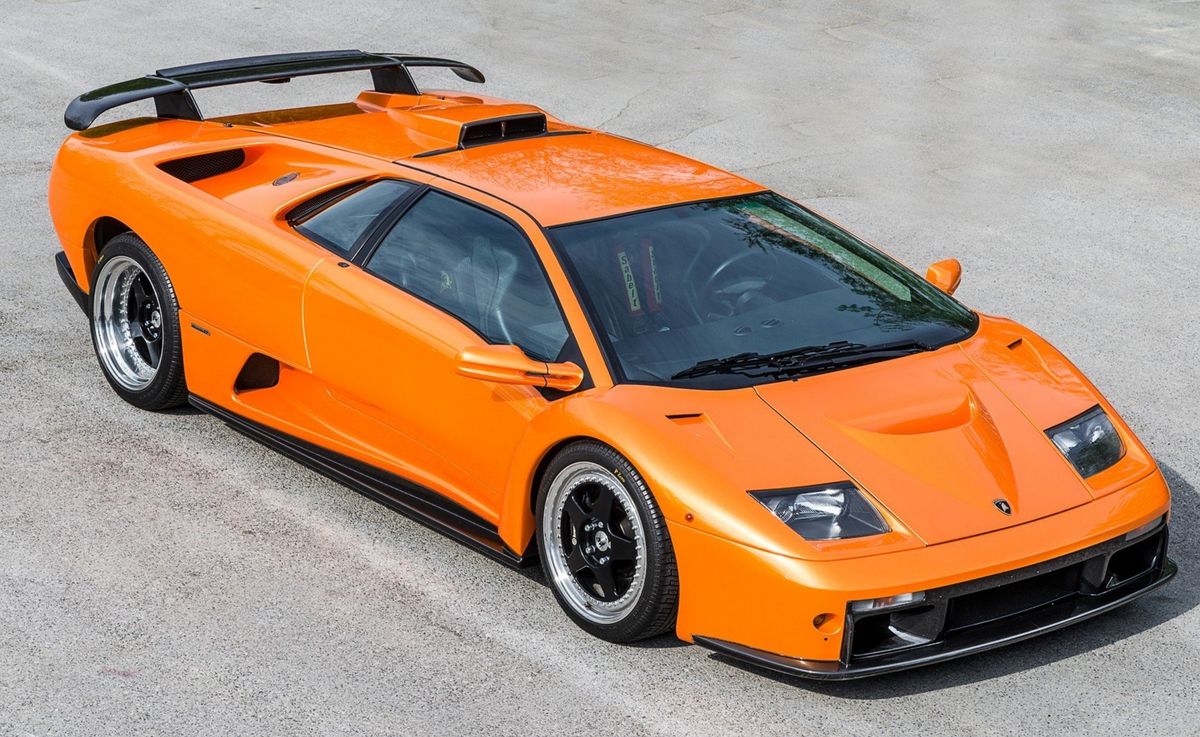
Yet, despite its devil-may-care ethos, the Diablo GT’s engine was surprisingly tractable when it wasn’t baring its fangs. Thanks to modern fuel injection and that multi-throttle setup, it could potter through town (on fewer cylinders maybe) without stalling or choking up – something older Countachs could never. But make no mistake, fuel economy is measured in “smiles per gallon” here, and the GT will consume high-octane petrol faster than you can say “Mamma mia!”. It’s all part of the charm – nobody buys a 6.0L V12 expecting Prius mileage. You buy it to experience one of the last great naturally-aspirated twelve-cylinders, unsullied by turbos or hybrid trickery. It’s an engine with soul and attitude, the heart of a raging bull, and in the Diablo GT it was given full license to misbehave. The result? A top-speed run becomes an event you’ll recount for years (assuming you didn’t black out from the adrenaline). Even Jeremy Clarkson – who’s driven literally everything – would probably get out of a Diablo GT, hair mussed and eyes wide, and utter his famous line: “Bloody hell…that was amazing.”
Driving a Lamborghini Diablo GT is not what you’d call a refined experience. This is a car that fights you, hugs you, scares you, and rewards you in equal measure – the automotive equivalent of riding a bull in a rodeo (fitting for a car with a bull on the badge). Lamborghini engineered the GT to be as track-focused as possible while technically remaining street-legal. Start with the chassis: the underlying structure was the same tubular spaceframe as the regular Diablo, but the suspension geometry was revised for sharper handling and the tracks widened front and rear for stabilityotsandco.com. The GT sits lower on its springs, and those springs/dampers were firmer, though interestingly Lamborghini retained the electronic adjustable shocks and power steering in the GTotsandco.com. That’s right – despite the race-car vibe, you still have a button to tweak the damping stiffness, and a hydraulic helm to save your arms at parking speeds. Why? Possibly because without power steering, trying to maneuver a Diablo at low speed is like wrestling a granite boulder (ask me how I know). And the adjustable shocks were probably left in so owners could go from “track stiff” to “street slightly-less-stiff” – though even in its softest setting, a Diablo GT rides about as gracefully as a skateboard on cobblestones. It crashes over bumps, tramlines on uneven roads, and generally communicates every pebble directly to your spine. But hey, no one buys a GT for comfort. You buy it for the thrills, and the suspension delivers that in spades by keeping the car flat and composed at ludicrous speeds – assuming a smooth road.
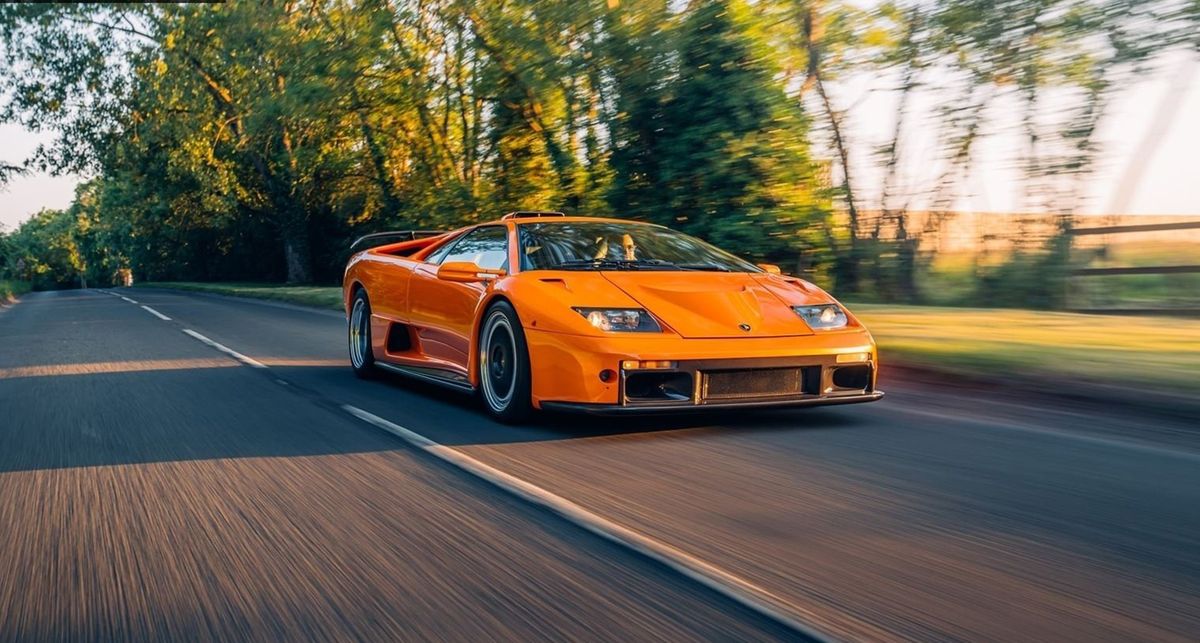
Grip levels are high thanks to those steamroller tires and aero downforce from the wing and diffuser. On a track, the Diablo GT can actually surprise you with its tenacity. It’s still a big, wide machine, but it will attack corners with far more poise than the earlier Diablos, which were known to be a bit… sketchy. The wider front track and revised suspension tame the notorious understeer that plagued its predecessorslambocars.comotsandco.com. Turn-in is quicker, and the car feels more balanced – up to a point. Remember, this bull is rear-drive only, and there’s no traction control net to catch you. Push too hard or get on the power too early exiting a turn, and the GT will happily swing its tail out and enter drift mode – at which juncture it’s all on you (and perhaps the grace of Saint Balboni) to reel it back. It’s the sort of car that demands respect and skill; treat it like a delicate modern supercar and it will bite. But treat it right – feed in throttle progressively, use the communicative steering, feel the weight transfer – and it will reward you with an old-school driving experience that’s become vanishingly rare. Modern supercars often flatter the driver; the Diablo GT challenges the driver. It separates the good from the merely wealthy.
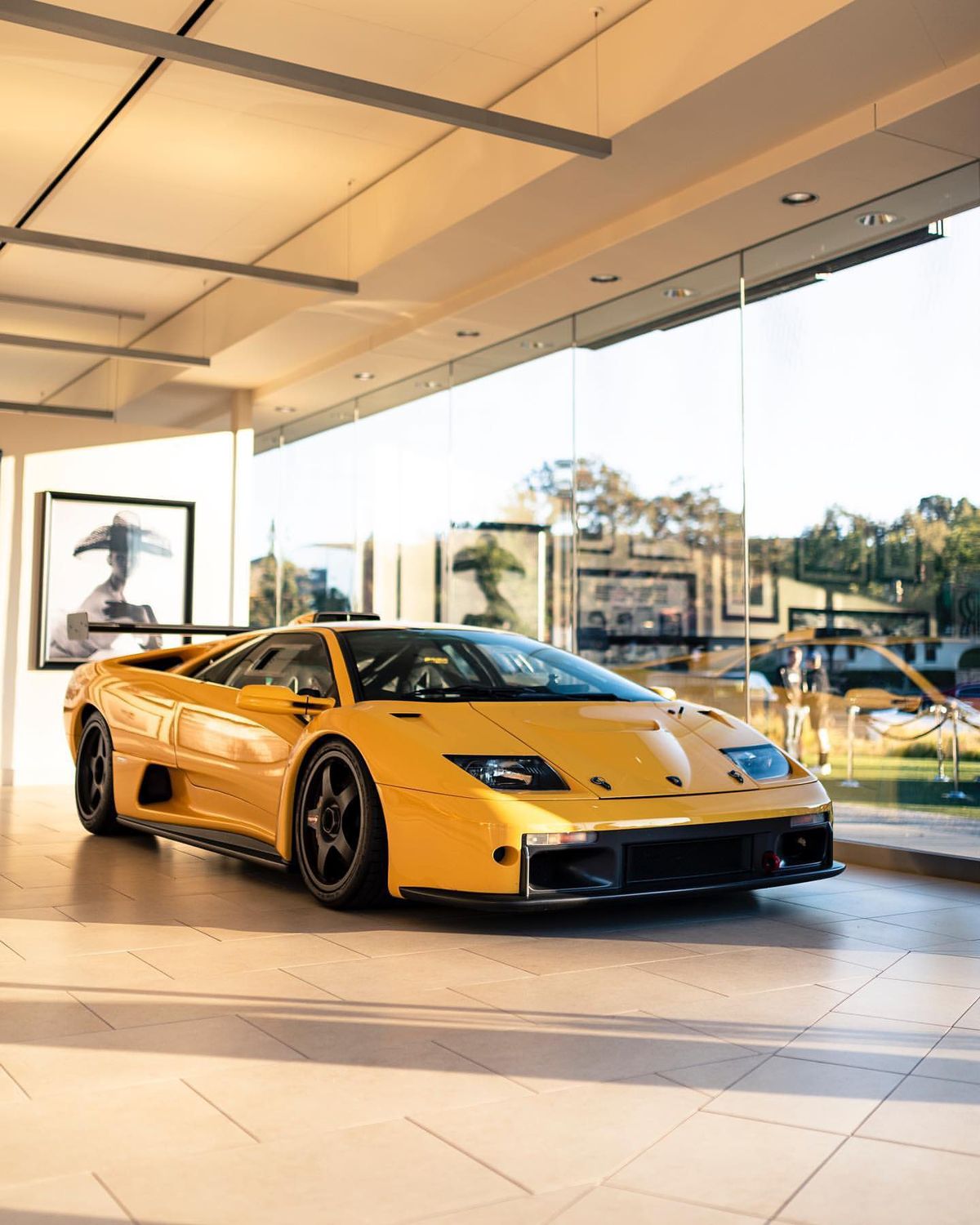
In terms of raw handling figures, the GT could pull something like 0.9g on the skidpad and its huge Brembo brakes (355 mm fronts) hauled it down from 60 mph in around 110 feet – impressive for the dayen.wikipedia.org. Those brakes, by the way, were cross-drilled and ventilated and backed by the latest Bosch ABS – so at least you could stomp the middle pedal with confidence and not end up flat-spotting those expensive tirestopgear.com. The 5-speed manual gearbox is carried over, but it’s no slick Honda shifter – it’s a classic Italian gated shifter, requiring a firm hand and deliberate shifts. It makes a satisfying clack-clack sound as you slot through the metal gate. However, the clutch is legendarily heavy – as Clarkson would say, “you need a left thigh like Schwarzenegger” to operate it smoothly in traffic. In true Lamborghini character, first gear is essentially useless for traction, second gear will take you to illegal speeds, and third gear is where the magic really happens – the car just charges forward on a wave of torque, engine screaming, as you hold onto the steering for dear life.
Speaking of steering, the Diablo GT’s helm is hydraulic and offers a hefty, old-fashioned feel. At parking lot speeds it’s still heavy (despite assist), and at speed it loads up nicely with feedback. There’s some play on center as was common then, but once you turn in, it’s immediate. You sense the front tires scrabbling for grip, and through a corner the wheel writhes a bit, talking to you in that analogue language modern electric power steering often forgets. It’s honestly quite confidence-inspiring on a smooth track or a good road. But on a bumpy British B-road? Hah! The GT would crash and tramline, and you’d be fighting the wheel as the car tries to follow every rut. “Ergonomics were close to terrible, with poor visibility, A/C unable to fight the heat soak from the vast engine and low speed refinement bad,” noted one brave Diablo pilotpistonheads.com. In other words, in normal conditions the GT is work. The cabin gets hot from that big engine right behind you (thank goodness it has air conditioning, albeit a wheezy one), the visibility out the back is literally a video screen’s worth, and the car is wider than many trucks, so threading it through traffic or narrow lanes is white-knuckle stuff. Clarkson might jibe, “It’s easier to park a Boeing 747 than a Diablo in central London.” He’s not wrong – you don’t so much drive a Diablo GT in town as hold on and hope.
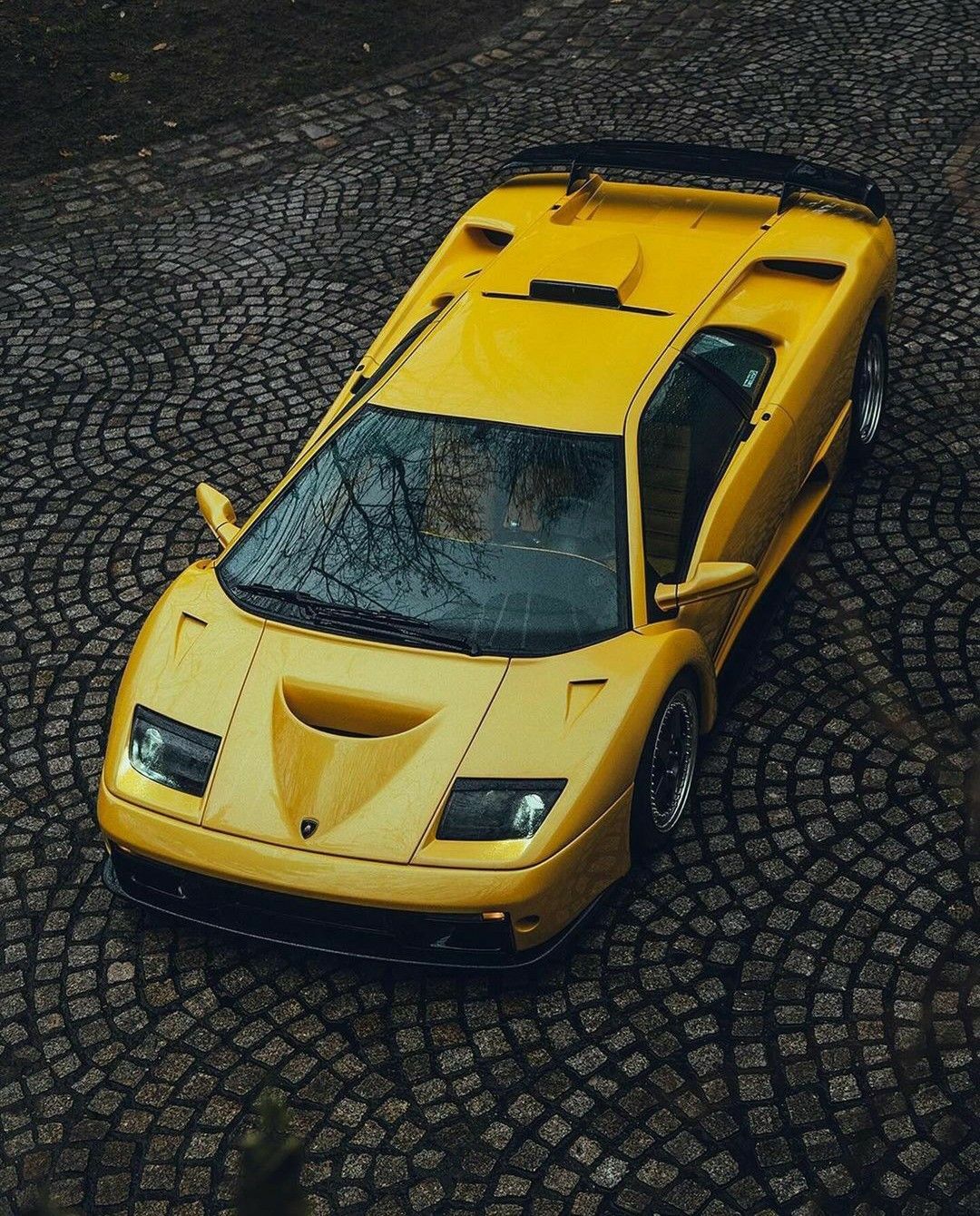
Yet, all those drawbacks melt away when you find the right road (preferably wide, smooth, and empty). Then the Diablo GT comes alive, going from scary to sublime. The balance with no front diff and no heavy AWD hardware is noticeably more agile – the nose feels lighter, the car rotates more eagerly into bendsf30.bimmerpost.com. You can actually steer it with the throttle a bit: ease off mid-corner and the nose tucks in; feed power on exit and the rear hunkers down and might step out slightly, which you can catch in a beautifully controllable slide if you know what you’re doing. It’s the kind of old-school, big-engine, rear-drive dance that die-hard enthusiasts adore (and lesser drivers fear). One could say the Diablo GT was Lamborghini’s first car aimed squarely at the enthusiast driver rather than the playboy poserautoevolution.com. It demanded skill but gave back pure exhilaration. Top Gear’s Stephen Dobie later wrote that none were “scarier” than the GTtopgear.com – but in that fear lies the exhilaration. It’s the difference between a rollercoaster with safety nets and one that’s all rickety wood and creaking bolts: you scream more on the latter, but you also feel truly alive.
In summary, the Diablo GT’s driving experience is raw, physical, and unforgettable. Modern performance cars might corner harder or accelerate faster, but few can match the sheer drama of piloting this Italian devil. You sit inches off the ground, the V12 buzzing and hissing behind your ears, the wide fenders filling your vision, the scent of hot oil and leather in your nose. Every input – steering, braking, shifting – requires commitment. And when you get it right, the GT rewards you with a sense of accomplishment (and perhaps relief that you’re still on the road right-side up). Jeremy Clarkson often says that the best drives are those that combine terror and joy. By that metric, the Diablo GT is one of the greatest drives of all time, delivering absurd amounts of both. It’s a car that will wrestle you – and if you win, you’ll step out shaking, laughing, and maybe kissing the ground. Not because it tried to kill you (though it might have), but because it gave you one of the most thrilling motoring experiences on the planet.
Clambering into a Diablo GT is an adventure of its own. The iconic scissor doors pivot skywards – a theatrical touch originally designed so you could open the door in tight Italian parking spots, but mostly serving to let everyone within 50 feet know you’re in a Lamborghini. Swing the door up (careful, it’s long) and you’re greeted by a cockpit that’s part race car, part luxury boudoir, and part 90s Italian eccentricity. Carbon fiber dominates the décor: the GT has woven carbon on the door panels, dashboard accents, center console, even the sills – if it could be made from carbon, Lamborghini did itotsandco.com. Slide into the seat (itself a kevlar-shell racing bucket, fixed back), and immediately you notice two things: you sit low (almost on the floor) and offset a bit towards the center because the wide transmission tunnel eats up footwell space. The seats in the GT have four-point harnesses in place of the usual three-point seatbeltsen.wikipedia.orgwearecurated.com – a clear nod to its track intent. They hug you firmly, upholstered in a mix of leather and Alcantara suede. Lamborghini, being Lamborghini, still allowed a bit of wild style inside: owners could spec contrast colors or even wild hues (one GT had bright yellow leather inserts on black carbon seats – talk about lurid!). The driving position is classic Diablo: legs splayed towards the middle, arms out, and the windshield feels close to your face. It’s actually relatively spacious for width (since the car is enormous), but tall drivers will find their head near the roof. Visibility out front is okay (aside from the low roofline making the view ahead letterbox-like), but out back – forget it. That giant scoop and tiny rear window mean you’re reliant on the side mirrors and that nifty rear camera with a pop-up Alpine screen on the dash.
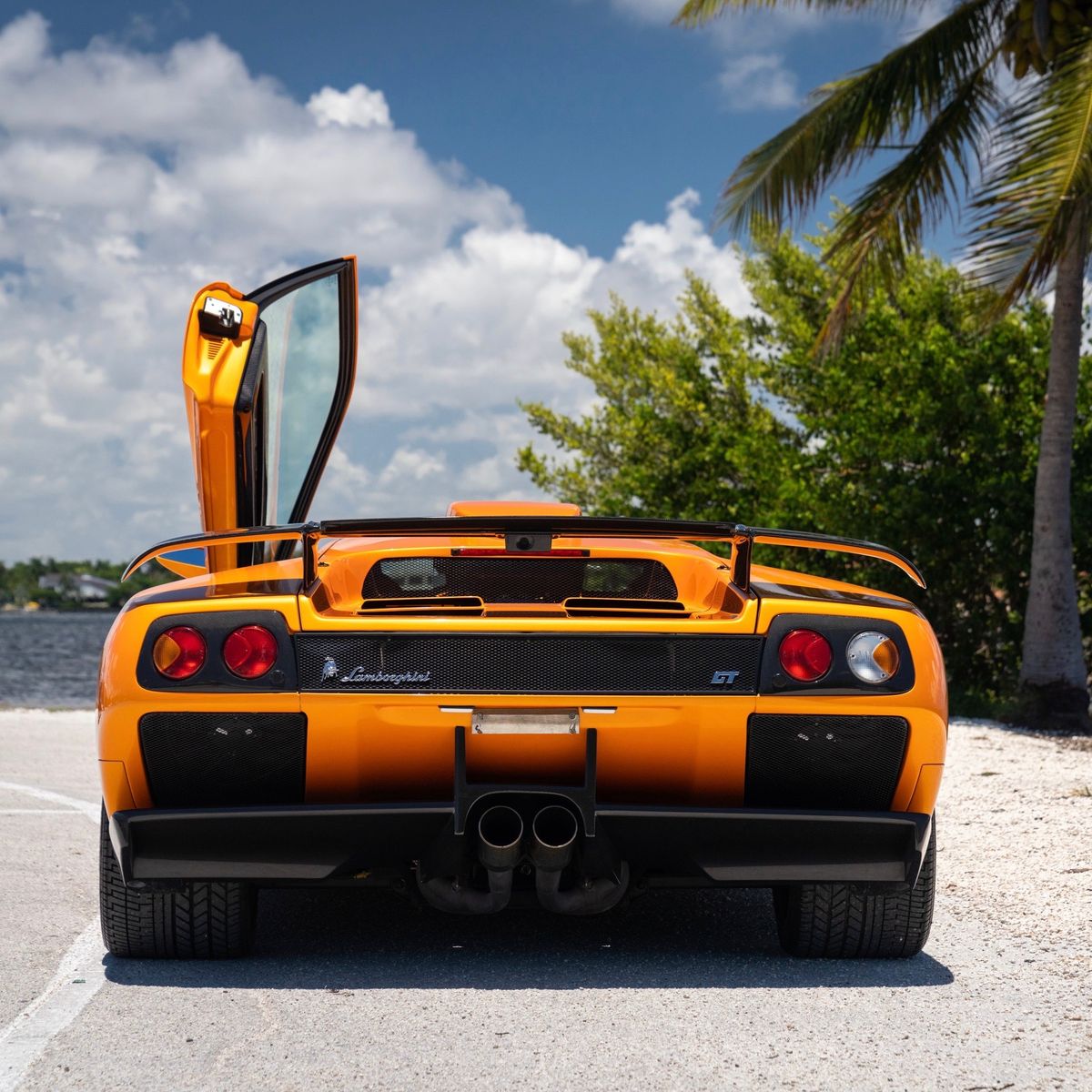
Yes, the Diablo GT, for all its hardcore cred, came with some surprisingly high-tech toys for 1999. The Alpine LCD screen GPS navigation system was optional, as was an in-dash CD changer and that reversing camera feed. All very fancy, though one suspects few GT owners were programming routes to the supermarket in the thing. Still, the mere presence of a built-in screen in the late ‘90s was novel – this is pre-iPhone era, remember. Clarkson would joke, “They even gave it sat-nav, presumably so you can find the nearest tire shop after you’ve destroyed your rear Pirellis in a cloud of smoke.” More practically, air conditioning remained standard – thank the car gods – because without it the cabin would become a literal hell (that big engine pumps a lot of heat). There was even an option for dual airbags, though you could delete the passenger airbag to save a bit of weight if you truly lived by the “no fat, only fast” credo. And unlike earlier stripped-out Diablo SE30, the GT kept creature comforts like power windows and an adjustable steering wheel, so it’s not as spartan as, say, an F40 inside. Lamborghini struck a curious balance: they gave the GT enough luxury that you wouldn’t hate life driving it on the road, but everything is delivered with a wink that says “we know you really want to be on a track.”
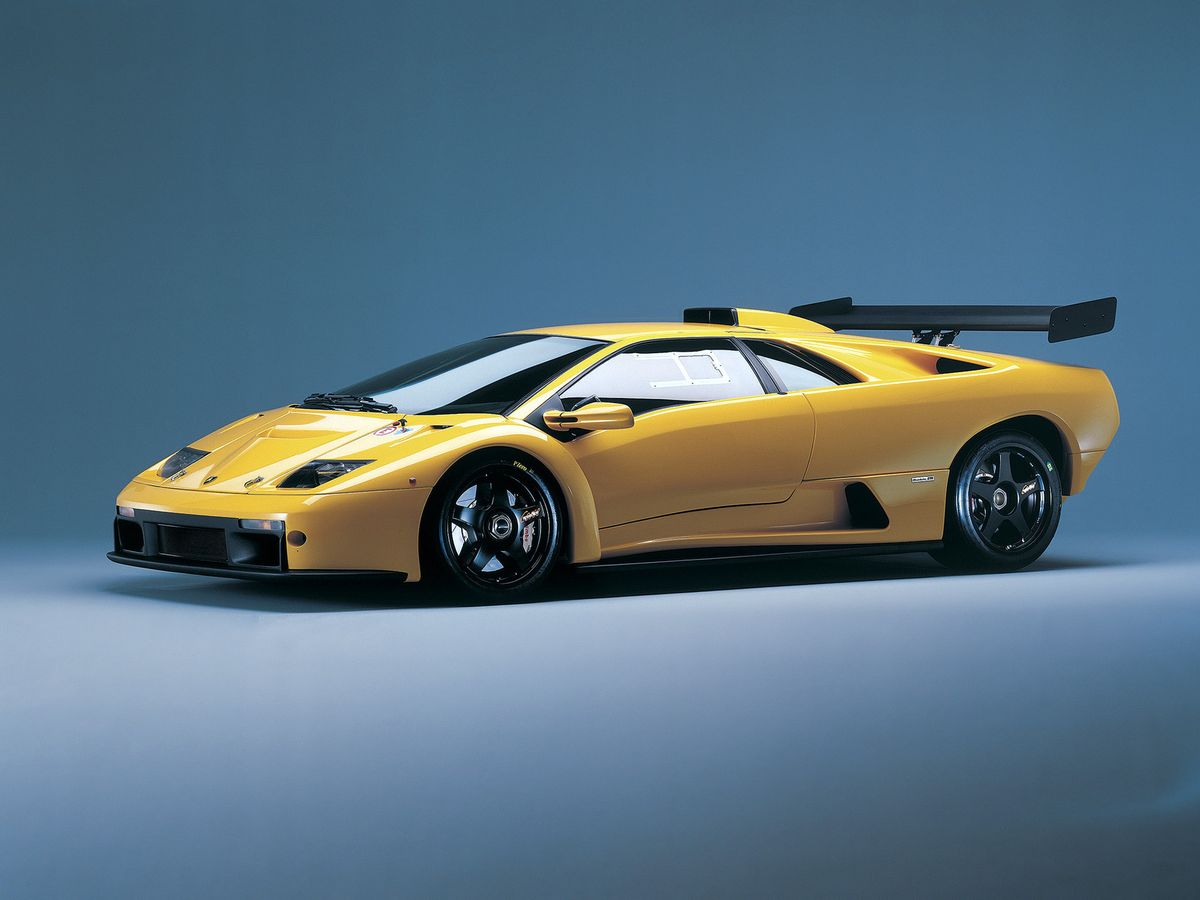
Build quality in the Diablo GT is… well, let’s charitably say “characterful.” The interior is swathed in rich leather and carbon, sure, but some switchgear harks back to earlier Diablos and even the Chrysler era (don’t be shocked if a window switch looks suspiciously similar to one from a Dodge). The gauges are classic 90s: white-on-black dials with an optimistic 360 km/h speedo and an 8000 rpm tach that reads “Lamborghini” on it proudly. You also get a battery of auxiliary gauges reminding you of oil temp, oil pressure, etc., just in case something decides to overheat (which, being Italian, it might). The driving experience inside is loud and visceral: there’s not much sound deadening, so you hear the engine’s every note, the whine of the straight-cut gears (if you listen closely), the whoosh of that roof scoop gulping air, and pebbles pinging the underside. Conversation is possible at sane speeds, but at full chat you’ll be yelling over the V12’s opera. It’s all very raw and mechanical – something Clarkson often laments losing in modern cars. In the GT, you feel everything. Even the vibration through the pedals – the gas pedal literally links to 12 throttle bodies, so it tingles underfoot as if connected to a living beast.
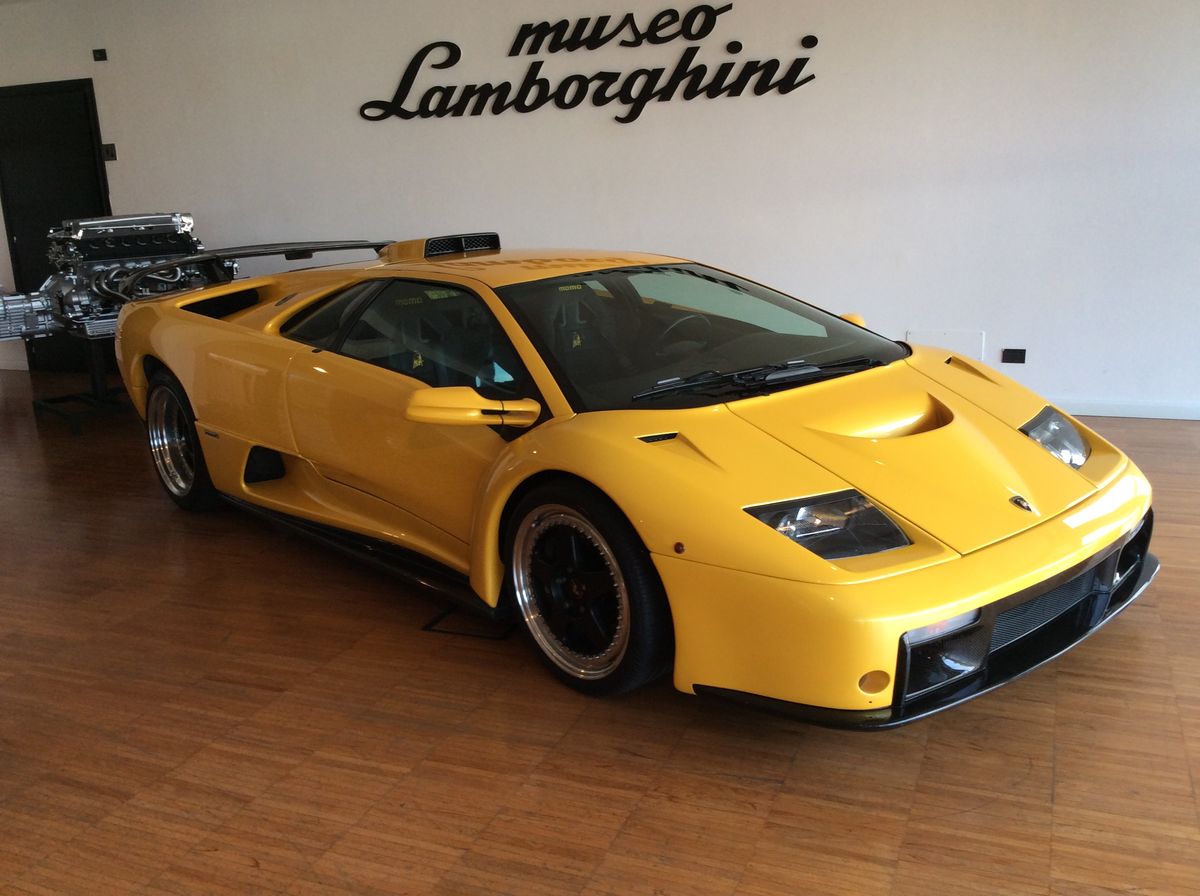
One charming oddity is the Diablo GT’s partial digital display – a tiny readout that can show things like outside temp or trip info. It’s the sort of early digital attempt that, by today’s standards, looks like a Tamagotchi screen. But it adds to the retro-futuristic vibe. Also worth noting: storage space is minimal. The front trunk (“frunk”) is mostly consumed by a spare tire and some tools. But Lamborghini did include a small luggage set behind the seats in some cars, bespoke for the GT, so you could – theoretically – take an overnight bag on your way to a trackday. You’ll need it, because after a day of pounding around, you’ll want a change of clothes (and maybe a stiff drink).
Quirks? Plenty. The pedals are offset towards the center, and the footwell is tight, meaning occasional unintended heel-and-ankle if you have big feet. The door sills are wide, so climbing out is a sort of gymnastic event – you swing the scissor door up, hoist yourself over the sill, and emerge hopefully gracefully. (Pro tip: back the seat up first, it helps.) The GT also includes a battery kill switch inside, a nod to its racing nature, so owners often have to remember to flick that if leaving the car parked for long (lest the battery drain powering all those little ECUs). And here’s a fun one: Lamborghini’s solution to meeting various regulations was often… creative. Some Diablo GTs delivered to customers came with no audio head unit fitted (if the owner wanted to save weight), but Lamborghini still put speakers in the doors – perhaps to fill the holes or just optimistic that someone might want tunes. As if you’d ever choose a stereo over the V12 behind you!
All told, the interior of the Diablo GT manages to be special and purposeful without completely stripping away comfort. It’s far more civilized than a Ferrari F40’s spartan cabin, yet more hardcore than a plush Ferrari 550 Maranello’s grand tourer vibe. It feels hand-built and bespoke, which is a nice way of saying a bit rough around the edges, but you forgive it because of the occasion it creates. Sitting in a Diablo GT, you know you’re in something legendary. You grip the small steering wheel (yes, the GT got a smaller diameter wheel for quicker responsesen.wikipedia.org), you see the massive haunches in the side mirrors, and you’re very aware that you, dear driver, are basically piloting a missile. It’s equal parts intimidating and intoxicating. Clarkson might compare it to sitting in the Millennium Falcon just before Han Solo punches to light speed – a mix of giddy excitement and “I have a bad feeling about this.” The Diablo GT’s cabin is a place where stories are born – of narrow misses, glorious speeds, mechanical symphonies, and the sheer joy of being a little bit bad in a car called the Devil.
From the moment Lamborghini announced only 80 Diablo GTs would be made, the car was destined for instant collectabilitylambocars.comwearecurated.com. In fact, despite a price tag around $300,000 in 1999 (a king’s ransom then, when a nice house cost less), all units were spoken for by early 2000lambocars.com. Only four right-hand-drive examples were allocated to the U.K., and they sold almost immediately to buyers with presumably titanium nerves and deep pocketslambocars.com. The GT was never officially sold in the U.S. due to emissions and safety not meeting regulations, but that didn’t stop a few determined enthusiasts from importing them “for off-road use” (wink wink)lambocars.comwearecurated.com. Those that did come to America had to sit in private collections or be shown on special occasions, awaiting the magic 25-year mark when they could finally roam free on U.S. streets. (Fun fact: as of 2024, the Diablo GT just hit that age, so expect to see a few finally legalized in the States – cue American collectors foaming at the mouth.)
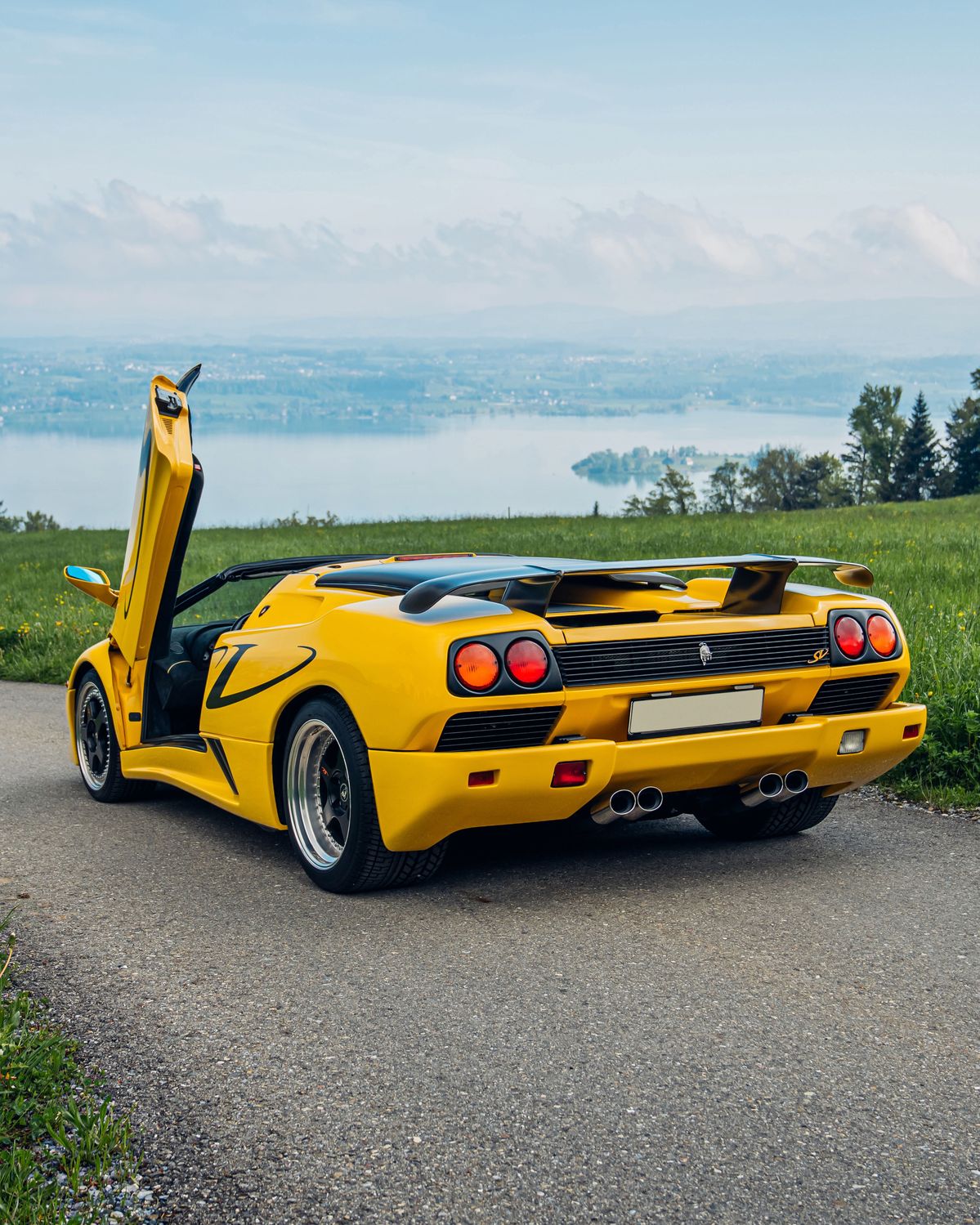
Each Diablo GT carries a build number plaque inside, and they’ve become the stuff of legend among Lamborghini aficionados. Over the years, seeing one in the wild was about as likely as spotting a unicorn doing the cha-cha. Collectors covet the GT not just for its performance, but for its significance: it’s the last true “analogue” Lamborghini supercar, the final development of the Diablo line, and a bridge between the old Lamborghini chaos and the new Audi-influenced era. It also didn’t hurt that the GT’s spec sheet reads like a greatest hits of supercar buzzwords: limited production, higher horsepower, racing technology, and a design that makes grown men weak at the knees. By the 2010s, Diablo GTs rarely changed hands, and when they did, prices skyrocketed. In 2016, one was listed for around £530,000 (~$720,000)topgear.com, and that seemed crazy at the time – after all, that was two brand-new Aventadors worth. But the market said otherwise. Come the 2020s, we started hearing whispers of Diablo GTs fetching the magic seven-figure mark at private sales. Hagerty and other experts mused that the GT could be the next million-dollar Lambo, just like the Miura SV or Countach LP400 Periscopio before it.
Why such a steep climb? Well, only ~80 exist in the world, many with ultra-low miles (because let’s face it, not everyone is brave enough to daily-drive a Diablo GT). It’s also part of that rare breed of 90s supercars that combine analog driving with modern-ish reliability – a sweet spot for collectors. And importantly, the GT has a mythic reputation: it’s spoken about in hushed, reverent tones as “the one that got away” for U.S. enthusiasts, and as “the ultimate Diablo” for those in the know. People who missed the chance to buy one new have spent years trying to pry them from original owners. There’s an infamous story of a man in Japan who had two Diablo GTs (one to drive, one as a garage queen) – that’s how obsessed some became.
Reception at launch was actually quite positive among the motoring press, if a bit awestruck. Magazines declared it “the maddest and most hardcore of all road-going Diablos”topgear.com, which is saying something given the Diablo lineage. Some noted the handling improvements and weight savings made it the best-driving Diablo ever. Others, with a wary eye, pointed out that it’s effectively a street-legal race car and thus not exactly friendly. As Top Gear cheekily put it, “There are cheaper used cars, but none scarier” when inviting readers to buy one usedtopgear.com. And indeed, the GT quickly built a scary reputation. Part of that was hyperbole – any supercar that rare and extreme will have tall tales. But part was earned: there were a few notable incidents of owners (or their over-enthusiastic friends) losing control of GTs at high speed. A famous one: a Diablo GT was almost written off during a press event when a driver spun it. The car’s widowmaker aura only increased its legend.

Over time, the Diablo GT’s legacy solidified as “the last true Lamborghini before Audi tamed things.” The Murciélago that followed in 2001 was a fantastic car, but more polished, with all-wheel-drive standard, smoother edges – a bit of Germanic discipline added to Italian passion. The GT, by contrast, feels like the final unchecked box of old Lamborghini insanity. Collectors adore that. It’s why even as Aventador SVJs and hybrid hypercars roll out, many will point to the Diablo GT and say “they don’t make ’em like that anymore.” It represents something irreplaceable: a snapshot of 90s supercar excess, unfiltered.
Today, seeing a Diablo GT is an event. At Concours or supercar meets, it will inevitably be mobbed by those in the know, while casual onlookers might mistake it for a “regular” Diablo until they notice the details and ask, “What is that?!” And then you get to smugly explain, “Ah, that, my friend, is a Diablo GT – one of only 80, and quite possibly the craziest Lambo of its era.” Values reflect this esteem: several have traded hands for around $1 million, and certain colors (the signature Arancio Atlas orange, or Nero Nemesis black) and low-mile examples command even more. It’s reached that status symbol zenith: posters in the 90s, seven-figure auction darling in the 2020s.
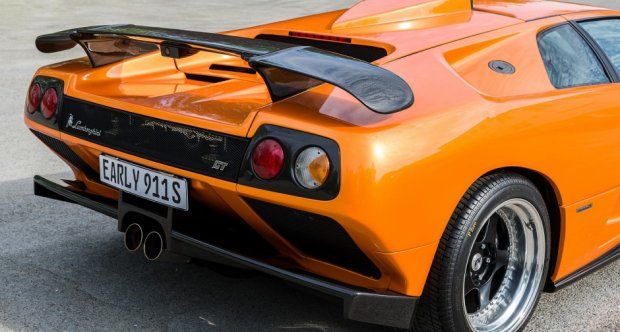
However, I suspect most Diablo GT owners don’t buy them purely as investments. They buy them because the car is a legend, and owning one is like holding a piece of automotive mythology. It’s a key to an exclusive club of drivers who have genuinely experienced one of the wildest road cars ever built. The GT’s reputation in enthusiast communities is almost heroic. On forums, people swap any tidbit of news (“Chassis #045 spotted in Monaco!”) with excitement. Some even attempt to replicate the GT look on lesser Diablos (a cottage industry of GT-style wings and intakes exists, though connoisseurs always know the real deal). In short, the Diablo GT has transcended mere car status and become an icon – the poster car that grew up, stayed crazy, and became a blue-chip classic. Jeremy Clarkson himself, a noted aficionado of classic supercars, would likely give a tip of his flat cap to the Diablo GT’s collectibility. After all, he loves a car with a story, and the GT’s story is as dramatic as they come.
In 1999, the supercar world was a fiercely competitive arena of speed and ego. So how did the Diablo GT stack up against its contemporaries and rivals? Remarkably well, especially when judged on the Jeremy Clarkson scale of lunacy (on which it scores near the top). Let’s size up a few notable peers:
When Lamborghini itself replaced the Diablo with the Murciélago in 2001, comparisons were made. The Murciélago had the same 6.2L V12 with 580 hp, but it was heavier, AWD, and more civilized (and designed by Donckerwolke with Audi’s influence). Many say the Murciélago was easier to drive fast and more stable, but perhaps a touch less insane. The Diablo GT remained the benchmark for “wild Lambo” until things like the Reventón or Aventador SV decades later. Even then, those cars have stability control, paddle shifts, and polish that the GT never pretended to have.

In Clarkson’s style: “Back in ’99, if you wanted the most bonkers road car around, you essentially had two choices: something from Maranello that would set your hair on fire, or this – the Diablo GT – which would set everything on fire and laugh about it. The Ferrari F50 was high-tech and precise, the Lamborghini was loud and uncouth. The McLaren F1 was a surgeon, the Lambo a streetfighter. It made its rivals seem either a bit sterile or a bit soft. The Diablo GT simply didn’t give a damn – it wasn’t here to play nice or chase lap records; it was here to chew gum and kick butt, and it was all out of gum.” In the end, the Diablo GT might not have been the fastest or sharpest tool in the shed full of 90s exotics, but it was arguably the most characterful and extreme road car of its time. It has since taken its place in the pantheon of greats, earning nods of respect even from the Ferraristi and McLaren crowd. Because no matter your allegiance, one must admit: the Diablo GT is a proper, unrepeatable legend.
No story of the Diablo GT would be complete without the little tidbits that make it such a charming and eccentric brute. Here are a few of the quirks, stories, and memorable moments that pepper the GT’s history:
All these oddities and stories build up the mosaic of the Diablo GT’s identity. It’s not just a car; it’s a legend with headlights. It has the absurdity and brilliance in equal measure that Jeremy Clarkson adores. He often anthropomorphizes machines, and the Diablo GT practically anthropomorphizes itself – it’s brash, temperamental, and larger than life, like some roaring beast from a medieval tale. And yet, it also showcases ingenious engineering and heartfelt craftsmanship from the folks at Lamborghini who poured their soul into making the most extreme car they could.

The Diablo GT managed to encapsulate all the odd charm of old Lamborghinis (the quirks, the drama, the flaws that endear) while also delivering serious performance that commanded respect. In a way, it’s the car that says: Yes, I’m ridiculous – but I’m also brilliant. And that formula – absurdity + excellence – is exactly what makes a car truly iconic in the hearts of enthusiasts.
So, as we look back on the Diablo GT, we remember not just the specifications or the limited production, but these little pieces of its story: the racing dreams that birthed it, the personalities who shaped it, the jaw-dropping looks, the ferocious drive, and the many ways it made people gasp, laugh, scream, and applaud. Jeremy Clarkson once quipped about a supercar, “It’s a monster. And I love it.” The Diablo GT is precisely that. A monster – and we absolutely love it.
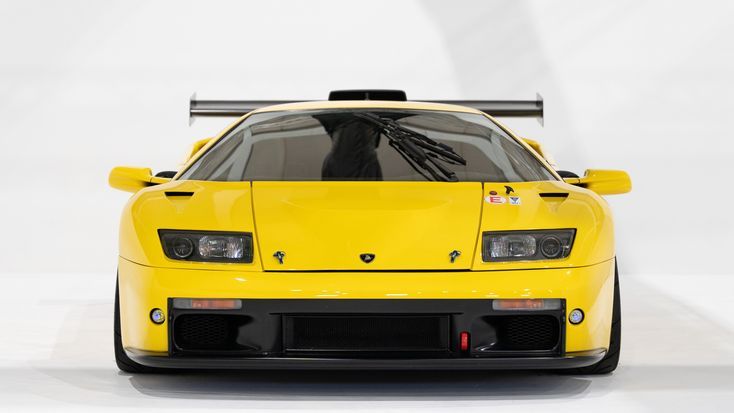
Final Thoughts: The Lamborghini Diablo GT remains one of the wildest rides ever to roar out of Sant’Agata. It took all the flamboyance and ferocity of the 1990s supercar era and distilled it into one final, uproarious send-off. It’s the car that marks the end of an era – the last of the hairy-chested, no-holds-barred Lamborghinis before the Germans brought along their traction controls and polite ergonomics. And it’s a car that, in true Jeremy Clarkson fashion, could be summed up as: “Ludicrous. Impractical. Terrifying. And utterly, magnificently wonderful.”
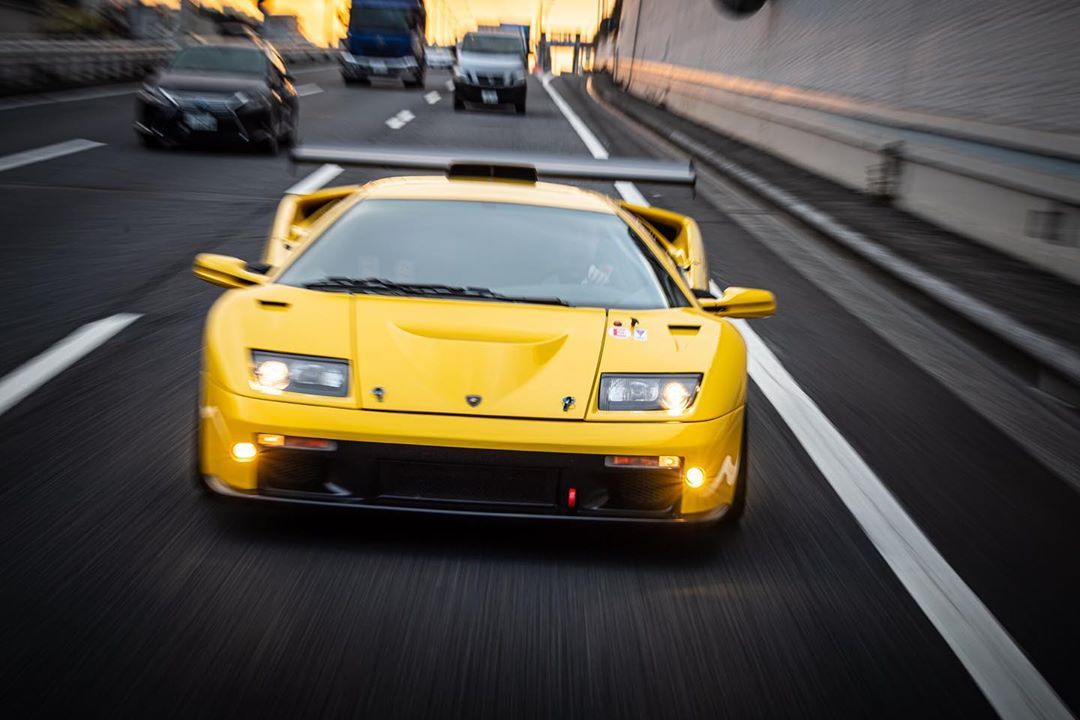
-